
500+ business plans and financial models

How to Write a Convenience Store Business Plan: Complete Guide
- January 11, 2023
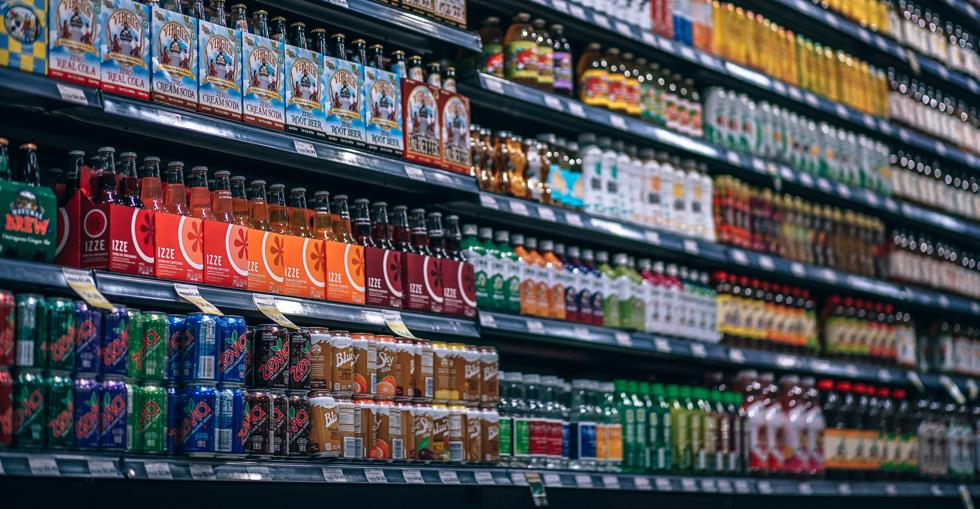
Whether you’re looking to raise funding from private investors or to get a loan from a bank (like a SBA loan) for your convenience store, you will need to prepare a solid business plan.
In this article we go through, step-by-step, all the different sections you need in the business plan of your convenience store. Use this template to create a complete, clear and solid business plan that get you funded.
1. Convenience Store Executive Summary
The executive summary of a business plan gives a sneak peek of the information about your business plan to lenders and/or investors.
If the information you provide here is not concise, informative, and scannable, potential lenders and investors will lose interest.
Though the executive summary is the first and the most important section, it should normally be the last section you write because it will have the summary of different sections included in the entire plan.
Why do you need a business plan for a convenience store?
The purpose of a business plan is to secure funding through one of the following channels:
- Obtain bank financing or secure a loan from other lenders (such as a SBA loan )
- Obtain private investments from investment funds, angel investors, etc.
- Obtain a public or a private grant
How to write an executive summary for a convenience store?
Provide a precise and high-level summary of every section that you have included in the business plan of your convenience store business. The information and the data you include in this segment should grab the attention of potential investors and lenders immediately.
Also make sure that the executive summary doesn’t exceed 2 pages in total: it’s supposed to be a summary for investors and lenders who don’t have time to scroll through 40-50 pages, so keep it short and brief.
The executive summary usually consists of 5 major sub-sections:
- Business overview : start by introducing your convenience store business, where it is located, the products you will sell, and the pricing strategy you want to implement. Mention what sets you apart from other businesses. For example, you may offer a hyper convenience store complete with a sit-down restaurant, bakery, pharmacy, and more.
- Market analysis : summarise the market where you will operate and provide a brief about your target market , target audience, spending capability, etc. Also give certain data points about the convenience store industry in the area where you want to operate (size and growth), as well as an overview of the main competitors, etc.
- People : introduce your convenience store business’ management and employee structure. Provide a brief (no more than a couple of sentences each) of the knowledge and experience of the team. Also, mention how the company will be structured (management roles and reporting lines)
- Financial plan: how much profit and revenue do you expect in the next 5 years? When will you reach the break-even point and start making profits? You can include here a chart with your key financials (revenue, gross profit, net profit )
- Funding ask : what loan/investment/grant are you seeking? How much do you need? How long will this last?
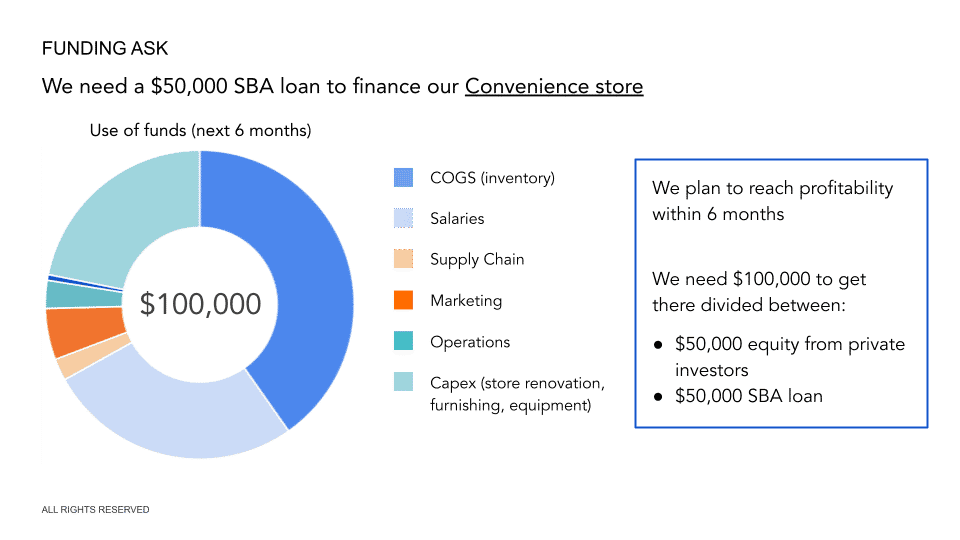
Convenience Store Financial Model
Download an expert-built 5-year Excel financial model for your business plan
2. Convenience Store Business Overview
In this segment of the business plan, you will provide details about the convenience store.
You must answer here some important questions that potential investors and lenders often ask about your business and operations. Here are some examples of questions you must answer:
- What is the rationale behind you opening a convenience store in your area today?
- Where will the business be located and why did you select that location?
- What type of products will you sell through your store?
- What will be your pricing strategy and why?
- What will be the legal structure of your company?
a) History of the Project
Any business overview must start with explaining the history of the project. There are 2 components here:
- Passion & experience of the business owner
- Rationale behind starting a convenience store today
Passion & experience
You may or may not have prior experience. If you have experience, speak about it and how it will help you to run your business. For instance, you may have worked as a store manager at a popular convenience store for 8 years. Now you want to start your own convenience store business and use your experience and knowledge to run the store efficiently.
Is there a certain problem (or perhaps, a set of problems) that your convenience store will try to solve when it comes into existence? For example, there may not be any hyper convenience store in the location that offers a sit-down restaurant, bakery, pharmacy, and other facilities.
But that’s not all! The market must be suitable for a business to exist and thrive. For instance, if you are trying to open a hyper convenience store in an area where there are highly established standalone pharmacies and restaurants with a loyal customer base, you may find it incredibly difficult to make a dent in their customer base.
Similarly, if the target customer base in the location prefers a traditional convenience store and you want to open a limited-selection convenience store, it will not work.
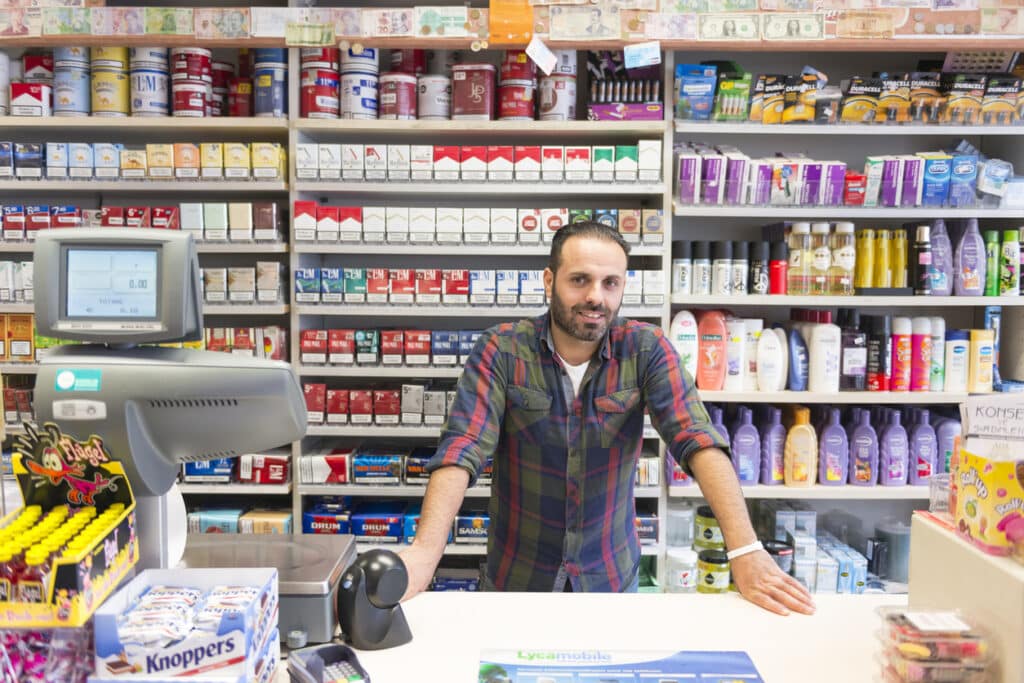
b) Business Model
This section of the Business Overview should explain the model you want to adopt for your convenience store business. For example:
- Will you buy an existing convenience store or an existing franchise convenience store, or will you start a new one from scratch?
- Where will the store be located and what made you select that location?
- What type of convenience store will you open?
- What type of products will you focus on?
- What will be the pricing strategy and why will you select that strategy?
What are the different types of convenience stores?
There are various types of convenience stores that you can select. You will start with one vital decision. Either you will buy an existing store (individually owned or a franchise) or you will start from scratch. Either way, there are different types of convenience stores you can start. Here are of them:
- Traditional stores : These are generally 2,400 to 2,500 square feet in size and offer a variety of products including baked products, dairy products, beverages, tobacco, beauty & health products, frozen & fresh meat, gasoline, limited produce items, etc.
- Expanded convenience stores : These ones are bigger with sizes ranging between 2,800 and 3,600 square feet. These stores will either offer more grocery options, or they may include a fast-food section with seating arrangements.
- Hyper convenience stores : These stores are the largest of all with an average size of anywhere between 4,000 and 5,000 square feet. They have different product and service departments. For instance, they may have a separate department for bakery products, a different section for a pharmacy, a sit-down restaurant, etc.
- Limited selection convenience stores : They are usually small with an area of 1,500 to 2,200 square feet. They sell a mix of grocery products, but the offerings are fewer than traditional stores. Food offerings are also limited to smaller things like hot dogs, popcorn, nachos, etc.
- Mini convenience stores : Not exceeding 800 to 1,200 square feet in size, these stores have very limited grocery offerings. For food service, they may offer no more than prepared sandwiches. These stores may operate 24 hours a day, but some may choose to operate only 18 hours.
- Kiosks : These are the smallest of all with the store area not exceeding 800 square feet (usually smaller). They mostly focus on selling gasoline, but some fast-moving items such as confectionaries, snacks, beverages, etc. can also be found.
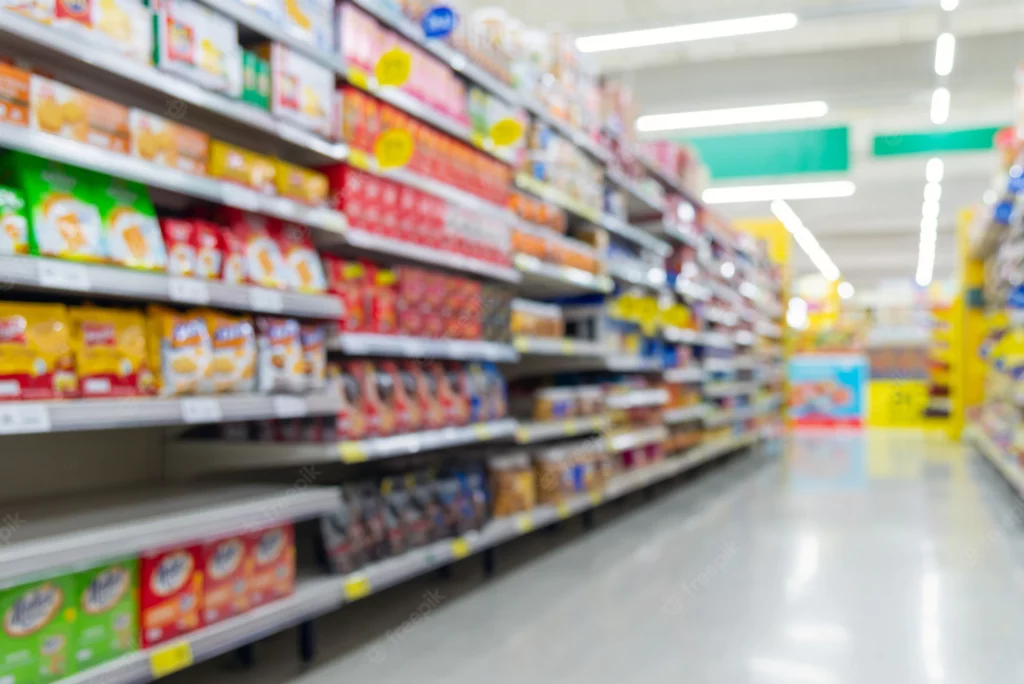
c) Products
The type of convenience store you want to open will define the type of products you offer. Of course, don’t provide a complete list of all the products you will sell here. Instead, you can list the main categories such as:
- Bakery products
- Frozen and fresh meat & fish
- OTC medicines & beauty products
- Restaurant (in case of a hyper convenience store)
- Fast-moving products (tobacco, snacks, etc.)
d) Pricing Strategy
This is where you will provide an overview of your pricing strategy. For instance, you may charge lower than your competitors because you may be enjoying huge wholesale discounts during inventory acquisition, and you may decide to pass on some benefits to your customers.
Similarly, you may decide to charge higher for certain items than your competitors because you offer 100% organic options for those products.
Pricing table
While it may not be possible to provide a proper pricing table for all products and services that you offer, it is still a great idea to provide a table that gives an overview of your pricing structure.
You can provide an average price based on categories. For instance, you can do something like this:
- Baked products: $1.25 to $12.45
- Frozen meat: $4.5 to $8.60
However, don’t go into extreme details because potential investors are not interested in the nitty-gritty of your pricing. They just need the big picture to assess the profitability, because they will tie your pricing strategy with financial projections.
e) Legal Structure
Finally, your business overview section should specify what type of business structure you want. Is this a corporation or a partnership (LLC)? Who are the investors? How much equity percentage do they own? Is there a Board of Directors? If so, whom? Do they have experience in the industry?
3. Convenience Store Market Overview
A complete understanding of the market where you want to operate is important for the success of your business. That’s also something you must showcase in your business plan.
For example, if you intend to sell pricey organic products through your convenience store in a low-income area, you will probably not succeed. You must understand the needs and the spending capacity of your target market and tailor your product offerings accordingly.
Therefore, you must cover here 3 important areas:
- Industry size & growth : how big is the convenience store business industry in your area? What is its growth rate (or decline rate) and what are the factors contributing to its growth or decline?
- Competition overview : how many competitors are there? How do they compare vs. your business? How can you differentiate yourself from them?
- Customer analysis : who is your target audience? What type of products do they usually buy at convenience stores? Do they prefer convenience stores to be open 24×7? What is their average bill size per visit? How frequently do they visit convenience stores?
a) Industry size & growth
How big is the convenience store business industry in the us.
According to Statista , the total sales of convenience stores in the US stood at $532.9 billion in 2020. Of this, $243.1 billion came from in-store sale alone (vs. gas sales).
In total, there were 150,274 convenience stores in the US in 2020, of which the vast majority are independent stores.
In other words, each store generates an average annual turnover $1,600,000 (excluding gas sales).
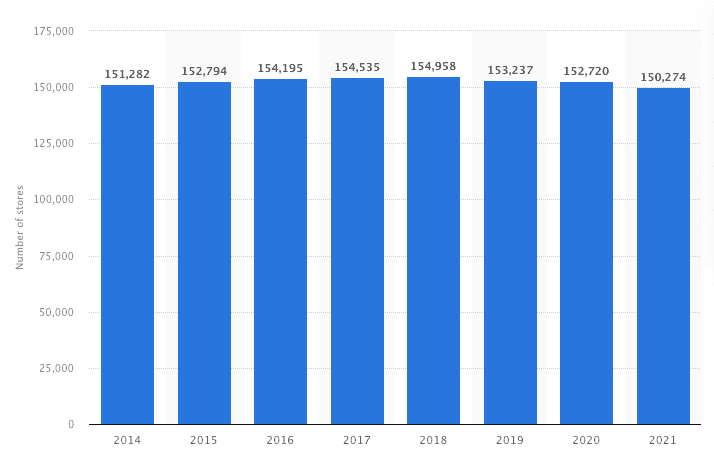
How big is the convenience store business industry in your area?
After getting a clear picture of the convenience store industry in the US as a whole, narrow down to your location. Unfortunately, it’s likely that you won’t find the number anywhere (at least not for free).
In that case, you can use our guide to estimate the TAM, SAM, and SOM for your business. Here is an example of how to do it:
We know the average convenience store in the US generates an annual turnover of $1.6 million (in-store sales only). Therefore, if the location where you will operate has a total of 40 convenience stores, the convenience store industry in your area is worth approximately $64 million.
How fast is the convenience store business industry growing in your area?
According to IBISWorld , the convenience store market in the US registered an annual growth rate of 3.1% from 2017 to 2022.
What about the location where you want to open your convenience store? US national averages can be a great addition to your business plan, yet they don’t necessarily help to assess the convenience store business industry where you want to open your store. For example, the industry might be growing in the US, but declining in your region for a number of reasons (businesses shutting down due to losses, etc.).
As you likely won’t find this information online, you can instead rely on the number of convenience stores in the location to calculate the average growth rate of the industry in your area.
For example, if the region had only 34 convenience stores in 2017 and 40 in 2022, you can assume that the average annual growth rate of the convenience store industry in the area is 3.53%, in line with the US national average.

b) Competition Overview
Studying your competitors’ business models is vital. You need to understand what makes them successful or why they fail. A clear understanding of their business model, the products they sell, their marketing strategies, etc., will allow you to provide a better service.
If your competitors are offering nearly the same products, then what is their market share and how do they market their products & services to attract new customers?
It is always a good idea to do some research (if necessary, you may consider physically visiting your competitors without revealing your business intentions) and create a comparative table summarizing their respective product offering, marketing strategy , store size, etc.
Here is a sample table that you can use:
Convenience Store SWOT Analysis
SWOT stands for Strength, Weakness, Opportunities, and Threats. This analysis will help lenders and investors better understand how you compare vs. competitors as well as the overall risk and reward profile of your business.
Here is a sample that you can use as a reference:
- Strengths : A master’s degree in business management, 9 years of experience as a general manager in a convenience store chain
- Weaknesses : Startup cost, no initial brand reputation
- Opportunities : Steady growth in residential population as people from other places are migrating to the area owing to its low cost of living, only 2 convenience stores in a 6-mile radius and 3 stores in a 12-mile radius
- Threats : Existing stores planning on opening new stores

c) Customer Analysis
This is the sub-section where you will provide a detailed analysis of your target audience. Some important points that you must include in your customer analysis include:
- What in-store products do they usually buy (apart from gas)?
- How long do they spend in a convenience store?
- What is the average amount they spend at a convenience store each month?
- Do they purchase beauty and OTC health products from convenience stores?
- What is the percentage of smokers and tobacco users in the area? This will give you a fair idea of whether you should stock cigarettes and other tobacco products or not
You can add as many data points as required to validate your business decision. The idea here is to display your deep understanding of the target audience and their needs, preferences, and expectations. This knowledge can help you to tailor your products & services to attract new customers.

4. Sales & Marketing Strategy
This is the section where you outline your customer acquisition strategy. Try to answer the following questions:
What is your Unique Selling Proposition (USP)?
- What are the different marketing strategies you will use?
- How do you intend to track the success of your marketing strategy?
- What is your CAC or customer acquisition cost?
- What is your marketing budget?
What marketing channels do convenience stores use?
A few marketing channels that convenience store businesses typically use are:
- Signages (most common)
- Local listings
- Loyalty programs
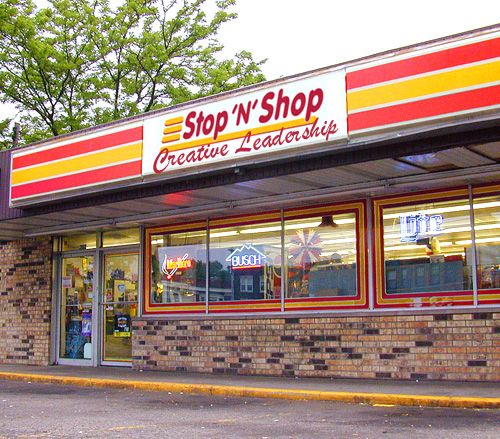
In other words, how do you differentiate yourself vs. competitors? This is very important as you might need to win customers from competitors.
A few examples of USPs are:
- Location: your store may be located in a very busy area
- Product variety : you may offer varied products for all your customers’ need
- Pricing : you may have cheaper products vs. competitors
Your USP will depend on your business model, competitor analysis , and target audience. Whatever your USP be, it should be clear and appealing to your target audience.
5. Management & People
You must address 2 things here:
- The management team and their experience/track record
- The organizational structure : different team members and who reports to whom?
Small businesses often fail because of managerial weaknesses. Thus, having a strong management team is vital. Highlight the experience and education of senior managers that you intend to hire to oversee your convenience store business.
Describe their duties, responsibilities, and roles. Also, highlight their previous experience and explain how they succeeded in their previous roles.
It is also important that you explain how their experiences and qualifications help you in implementing the convenience store business you are proposing. If they have specialized training and experience (for example, 9 years of general manager experience in a leading convenience store chain, 7 years of vendor management experience, etc.), add that information.
Organization Structure
Even if you haven’t already hired a general manager, stockist, salesperson, cashier, guard, and other relevant staff members, you must provide a flowchart of the organizational structure defining hierarchy and reporting lines.
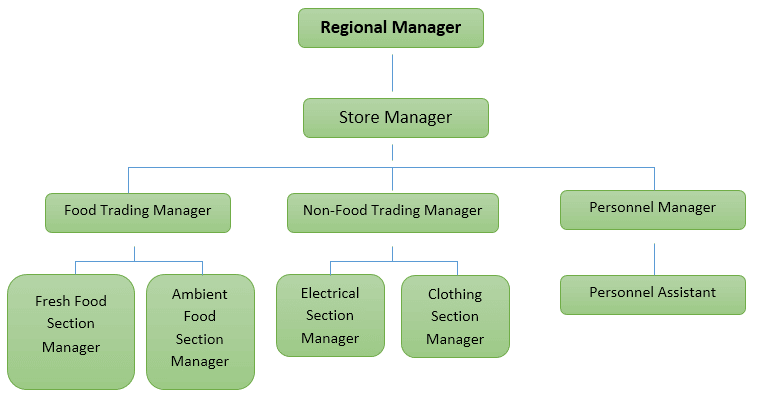
6. Financial Plan
The financial plan is perhaps, with the executive summary, the most important section of any business plan for a convenience store.
Indeed, a solid financial plan tells lenders that your business is viable and can repay the loan you need from them. If you’re looking to raise equity from private investors, a solid financial plan will prove them your convenience store is an attractive investment.
There should be 2 sections to your financial plan section:
- The startup costs of your project (if you plan to start a new store, add a new store to your chain, etc.)
- The 5-year financial projections of your convenience store(s)
a) Startup Costs
Before we expand on 5-year financial projections in the following section, it’s always best practice to start with listing the startup costs of your project. For a convenience store business, startup costs are all the expenses you incur before you start making sales. These expenses typically are:
- The acquisition of the real estate (if you buy)
- The lease deposit (if you rent)
- The renovation and equipment costs
- Business insurance, etc.
Of course, the startup costs depend on a number of factors, like the number of stores you plan to open, their size, the products you will sell, etc.
For example, it costs on average $290,000 to $351,000 to start a 1,500 sq. ft. convenience store (assuming you need to do a lot of renovation and overhaul).
Note that these costs are for illustrative purposes and may not be fully relevant for your business. For more information on how much it costs to open and run a convenience store, read our article here .
b) Financial Projections
In addition to startup costs, you will also need to build a solid 5-year financial model in the business plan of your convenience store.
Note that your financial projections should be built using a spreadsheet (e.g. Excel or Google Sheets) and presented in the form of tables and charts in your business plan.
As usual, keep it concise here and save details (for example detailed financial statements, financial metrics, key assumptions used for the projections) for the appendix instead.
Your financial projections should answer at least the following questions:
- How much revenue do you expect to generate over the next 5 years?
- When do you expect to break even?
- How much cash will you burn until you get there?
- What’s the impact of a change in pricing (say 10%) on your margins?
- What is your average customer acquisition cost?
You should include here your 3 financial statements (income statement, balance sheet and cash flow statement). This means you must forecast:
- The number of customers / orders over time ;
- Your expected revenue ;
- Operating costs to run the business ;
- Capex (cost to renovate / build your store, furniture and equipment, etc.)
When projecting your financials, make sure to sensitize sales volume (customers), pricing as well as the expenses (inventory, salaries, etc.). Indeed, a small change in these assumptions may have a significant impact on your revenues, and most importantly, your profits.

7. Use of Funds
This is the last section of the business plan of your convenience store. Now that we have explained what your business model is, what type of products you sell, how you get customers, etc., this section must now answer the following questions:
- How much funding do you need?
- What financial instrument(s) do you need: is this equity or debt, or even a free-money public grant?
- How long will this funding last?
- Where else does the money come from? If you apply for a SBA loan for example, where does the other part of the investment come from (your own capital, private investors?)
If you raise debt:
- What percentage of the total funding the loan represents?
- What is the corresponding Debt Service Coverage Ratio ?
If you raise equity
- What percentage ownership are you selling as part of this funding round?
- What is the corresponding valuation of your business?
Use of Funds
Any business plan for a convenience store should include a clear use of funds section. This is where you explain how the money will be spent.
Will you spend most of the loan / investment in paying your employees’ salaries and the COGS (inventory)? Or will it cover mostly the cost for acquiring the real estate and renovations?
For the use of funds, we also recommend using a pie chart like the one we have in our financial model template where we outline the main expenses categories as shown below.
Privacy Overview

Convenience Store Business Plan Template
If you want to start a convenience store business or expand your current one, you need a business plan.
Over the past 20+ years, we have helped over 7,000 entrepreneurs and business owners create business plans to start and grow their convenience stores.
Below are links to each section of your convenience store business plan template :
Next Section: Executive Summary >
Convenience Store Business Plan FAQs
What is the easiest way to complete my convenience store business plan.
Growthink's Ultimate Business Plan Template allows you to quickly and easily complete your Convenience store Business Plan.
Where Can I Get a Convenience Store Business Plan PDF?
You can download our Convenience Store business plan PDF here. This is a business plan template you can use in PDF format.
What Is a Convenience Store Business Plan?
A business plan provides a snapshot of your convenience store as it stands today, and lays out your growth plan for the next five years. It explains your business goals and your strategy for reaching them. It also includes market research to support your plans.
Why Do You Need a Business Plan for a Convenience Store?
If you’re looking to start a convenience store or grow your existing convenience store you need a business plan. A business plan will help you raise funding, if needed, and plan out the growth of your convenience store in order to improve your chances of success. Your convenience store business plan is a living document that should be updated annually as your business grows and changes.
What Are the Sources of Funding for a Convenience store?
Convenience stores are usually funded through small business loans, personal savings, credit card financing and/or angel investors.
What Products Should You Include in Your Convenience Store?
Many aspects of your business plan for a convenience store hinge on the choice of products for the store to carry. Certainly, this should be based on the customers you seek to reach with your store. Here are some other considerations that should go into the choice of the product line.
Level of Variety
With a high level of product variety (a broad product line), your store may be sought out by more customers who may find what they need more often, on average, leading to increased revenues. However, this benefit carries with it increased storage costs for the additional inventory that isn’t placed directly on shelves, especially items which sell fast. The storage costs include the rent for storage space or a storage room at the store and all of the labor associated with tracking and finding items in storage. There is also a need for more shelf space which may require more display units and even a larger store and higher rent. With more items to track and constantly restock, as well as the difficulty in projecting sales for a specific item, there is a greater chance of stocking out on any specific item. In those cases, hopefully you carry similar items that a customer might buy as a substitute.
With low variety (a narrow product line), the costs associated with stock-outs, storage, and shelf space are reduced somewhat. However, you will turn away more customers who cannot find the exact item they are seeking and will not accept substitutes.
Pricing For Convenience
Convenience stores, focused on quick purchases to fill a specific customer need, whether it is to change a light bulb or solve a sugar craving, offer their convenience in the form of a smaller store by pricing at a premium to what a customer would pay in a larger store like a supermarket, chain drug store, or hardware store. Customers are willing to pay 10% more for an item (or even higher), for example, to avoid a longer wait in line and longer travel time to reach the larger store.
In choosing the products to carry, you must examine the cost of purchasing in low quantities and make sure you can price high enough to cover the higher unit cost you will incur over what a larger store might. Products that are too expensive to buy in low quantities will not be feasible for this reason, as there is a limit to the price you can charge and expect to sell the product at.
CONVENIENCE STORE BUSINESS PLAN OUTLINE
- Convenience Store Business Plan Home
- 1. Executive Summary
- 2. Company Overview
- 3. Industry Analysis
- 4. Customer Analysis
- 5. Competitive Analysis
- 6. Marketing Plan
- 7. Operations Plan
- 8. Management Team
- 9. Financial Plan
- 10. Appendix
- Convenience Store Business Plan Summary
Other Helpful Business Plan Articles & Templates

Convenience Store Business Plan Template
Written by Dave Lavinsky
Convenience Store Business Plan
You’ve come to the right place to create your Convenience Store business plan.
We have helped over 5,000 entrepreneurs and business owners create business plans and many have used them to start or grow their convenience stores.
Below is a template to help you create each section of a business plan for your convenience store.
Executive Summary
Business overview.
Speedy Pete’s Convenience Store is a new convenience store located in Lansing, Michigan. The business is a newly established convenience store set up by its founder, Pete McGee. As a longtime retailer and employee of various convenience stores throughout Lansing, Pete realized that the small suburb that he resides in has grown too quickly to meet the demand of the area residents. There is an intersection that Pete has identified to be without a convenience store within 5 miles.
For the past ten years, Pete has been the area manager for 6 convenience stores for a locally-owned brand. Through his promotion, Pete oversaw the store managers and made sure each store was profitable, well stocked, and had the proper staff in place. Through his knowledge and training, Pete is well-equipped to be able to open his own convenience store and manage it properly.
Speedy Pete’s will offer gas as well as a car wash and air machine for tires. The store itself will offer alcoholic and non-alcoholic beverages, snacks, basic groceries, and ready-made coffee, donuts, and hot food. It will be the perfect stop for the area residents to stop in and purchase their products without having to go out of their way.
Product Offering
The following are the products that Speedy Pete’s Convenience Store will provide:
- Air Machine
- Non-alcoholic beverages
- Beer and Wine
- Basic Groceries
- Beverage Machine
- Freshly Made Hot Coffee
- Freshly Made Donuts/Cookies
- Freshly Made Hot Food (hot dogs, burritos, sandwiches)
Customer Focus
Speedy Pete’s Convenience Store will target all residents residing in southeastern Lansing and commuters traveling through the area. The customers will come from all demographics and ages.
Management Team
Speedy Pete’s Convenience Store will be owned and operated by Pete McGee. As a former area manager that oversaw 6 convenience stores in the area, Pete is able to open, train his employees, and ensure that the convenience store will run smoothly and efficiently. He is exceptionally knowledgeable in monitoring profit margins and ensuring the store is profitable.
Pete McGee has worked in the retail industry for most of his life. He has worked in convenience stores, home improvement stores, and large retailers. For the past ten years, Pete has been the area manager for 6 convenience stores for a locally-owned brand. Through his promotion, Pete oversaw the store managers and made sure each store was profitable, well stocked, and had the proper staff in place. Pete was exceptional at his job as he was able to monitor profit margins and teach his store managers which products to keep on the shelves and which products to get rid of. Through his knowledge and training, Pete is well-equipped to be able to open his own convenience store and manage it properly.
Success Factors
Speedy Pete’s Convenience Store will be able to achieve success by offering the following competitive advantages:
- Ideal location – there is not a convenience store within 5 miles of the newly developed neighborhood
- Large selection of snacks, beverages, and freshly made items
- The gas to be sold is from the highest quality gas distributor
Financial Highlights
Speedy Pete’s Convenience Store is seeking $400,000 in debt financing to open the convenience store. The funding will be dedicated towards securing the land, funding the construction, and purchasing the initial inventory. Funding will also be dedicated towards three months of overhead costs to include payroll of the staff, utilities, and marketing costs for the convenience store. The breakout of the funding is below:
- Purchase 0.5 acre of retail land located at an intersection: $100,000
- Construction and build-out of the small convenience store: $100,000
- Three months of overhead expenses (payroll, rent, utilities): $150,000
- Marketing costs: $10,000
- Working capital: $40,000
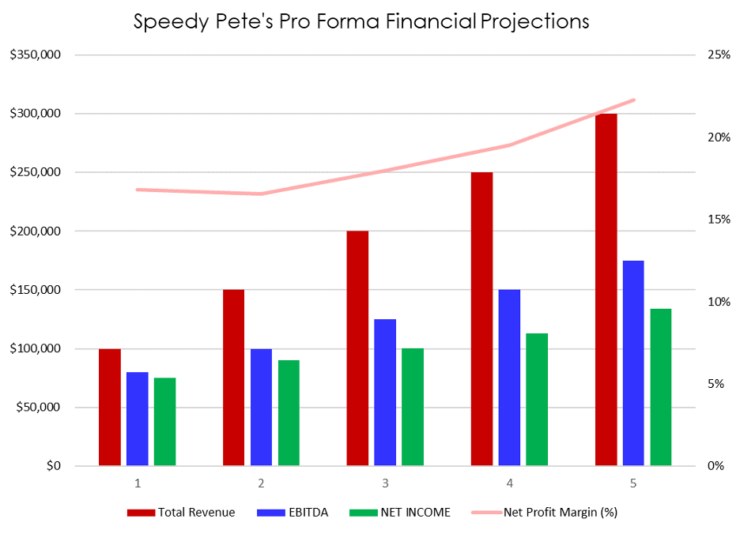
Company Overview
Who is speedy pete’s convenience store.
Speedy Pete’s Convenience Store is a new convenience store located in Lansing, Michigan. The business is a newly established convenience store set up by its founder, Pete McGee. As a longtime retailer and employee of various convenience stores throughout Lansing, Pete realized that the small suburb that he resides in has grown too quickly to meet the demand of the area residents. There is an intersection that Pete has identified to be without a convenience store within 5 miles. The city just put up a traffic light because the traffic has increased significantly within the past two years. The intersection is at the bottom of a newly developed neighborhood so the convenience store will be passed by its residents multiple times throughout the day and will be accessible through two points of entry.
Speedy Pete’s Convenience Store History
Speedy Pete’s Convenience Store is owned and operated by Pete McGee. Pete is a former convenience store employee, manager, and area manager. He has experience in monitoring profit margins, managing employees, and managing inventories.
Since incorporation, Speedy Pete’s Convenience Store has achieved the following milestones:
- Registered Speedy Pete’s Convenience Store, LLC to transact business in the state of Michigan.
- Has contracts in place for his gas, grocery, and drink suppliers.
- Contacted an architectural and construction firm to begin the design and construction of the convenience store.
- Began recruiting a staff of employees to help him with the day to day operations.
Speedy Pete’s Convenience Store Products
The following will be the products Speedy Pete’s Convenience Store will provide:
Industry Analysis
Customer analysis, demographic profile of target market.
Speedy Pete’s Convenience Store will target all residents of Lansing Michigan. The target market will consist of area residents, students, and employees working in the area.
The precise demographics for Lansing, Michigan are:
- 1,006,032 residents
- 560,000 households
- 584 schools
- 300,084 area businesses
- 3 major highways within 20 miles
Customer Segmentation
Speedy Pete’s Convenience Store will primarily target the following customer profiles:
- Residents living in the area
- Employees working in the area
- Travelers driving through Lansing
Competitive Analysis
Direct and indirect competitors.
Speedy Pete’s Convenience Store will face competition from other companies with similar business profiles. A description of each competitor company is below.
Speed Demon Convenience Stores
Speed Demon is a gasoline-convenience store brand that has over 3,500 stores across the country. They service over 2 million customers everyday and offer a robust rewards program where customers are able to earn discounts on gas and products by being a frequent shopper. The stores include a Speedy Cafe that is a fast-casual dining option and is on track to open another 100 stores by the end of next year. The company is headquartered in Ohio and is a sub-organization with Marathon Petroleum.
9-29 Convenience Stores
9-29 Convenience Stores is a large name in the convenience-retailing industry. Based in Irving, Texas, 9-29 operates, franchises, and/or licenses more than 13,000 stores in the U.S. and Canada. The company offers cold drinks, candy, pizzas, groceries, tobacco items, lottery tickets, coffee, juices, sandwiches, ice creams, snacks, and other related items. The chain was founded in 1927.
A couple of the most popular items 9-29 offers are their large Slurpee drinks and large soft drink cups for its soda fountain machine. The cups offered are the largest on the market at 128 ounces.
Fast Time Convenience Stores
Fast Time Convenience Stores is an operator of a network of convenience stores and gas stations in the northeastern part of the United States. The company’s stores offer groceries, beverages, fresh food, car wash services, road transportation fuel, stationeries and other retail products. Fast Time was founded in 1958 and continues to operate from the original family that established it.
Most recently, Fast Time has attempted to grow its footprint to the midwestern states of the US. The company is currently conducting market research to see if the investment would be viable as those states tend to be saturated with a multitude of convenience store chains.
Competitive Advantage
Speedy Pete’s Convenience Store will be able to offer the following advantages over their competition:
Marketing Plan
Brand & value proposition.
Speedy Pete’s Convenience Store will offer the unique value proposition to its clientele:
- The location is strategically located in a convenience store desert where there is no other convenience store within 5 miles.
- Large selection of snacks, beverages, and freshly made hot food items.
- The store will contract with the highest quality fuel distributor.
- Pricing will be competitive and on par with other convenience store chains.
Promotions Strategy
The promotions strategy for Speedy Pete’s Convenience Store is as follows:
Speedy Pete’s will be located in a newly developed neighborhood where there are no other convenience stores in the area yet. The owner has identified a parcel of land in a highly trafficked area where a traffic light was just put up. The intersection sees thousands of residents and cars pass by on a daily basis.
Print Advertising
Speedy Pete’s Convenience Store will invest in professionally designed print ads to display in newspapers, paper programs, or flyers to be handed out at local events.
Website/SEO Marketing
Speedy Pete’s Convenience Store will hire a third-party marketing company to design their print ads and design their website. The website will be well organized, informative, and list all the convenience store products they plan to offer. The website will also list their contact information and directions to the convenience store. The marketing company will also include SEO tactics so that anytime someone types in the Google or Bing search engine “Lansing convenience store” or “convenience store near me”, Speedy Pete’s Convenience Store will be listed at the top of the search results.
The owner will also hire the marketing company to design eye-catching billboard designs to be displayed in different parts of the city. The billboards will target the drivers and/or tourists that will be heading in the direction of the convenience store.
The pricing of Speedy Pete’s Convenience Store will be moderate and on par with competitors so customers feel they receive value when purchasing their convenience store products.
Operations Plan
The following will be the operations plan for Speedy Pete’s Convenience Store.
Operation Functions:
- Pete McGee will be the Owner and Operator of the company. He will oversee all staff, hire, train, and manage store inventory, and supplier contracts and relationships.
- Bob Jones – will be the Head Manager to be in charge of the convenience store when Pete is not there. He will also work closely with Pete to learn all aspects of managing a convenience store.
- Bookkeeper – Will be in charge of payroll, accounts receivable and payable, and tax payments.
- Staff of 3 – 4 employees to assist with customer service and cleaning.
Milestones:
Speedy Pete’s Convenience Store will have the following milestones complete in the next six months.
1/1/202X – Finalize purchase of retail land
2/15/202X – Begin construction on the convenience store
3/1/202X – Finalize contracts for gas and grocery supplier
4/15/202X – Purchase all store inventory and supplies
5/1/202X – Final walk through of convenience store
5/15/202X – Hire and train convenience store staff
6/1/202X – Speedy Pete’s Convenience Store opens for business
Speedy Pete’s Convenience Store will be owned and operated by Pete McGee, a lifelong Lansing resident who has extensive experience in the convenience store industry, having worked as an hourly employee and up to an area manager overseeing 6 stores.
Financial Plan
Key revenue & costs.
The revenue drivers for Speedy Pete’s Convenience Store are the revenues it will receive from the sales of gas, car washes, grocery, snacks, beverages, alcoholic beverages, and hot ready made food.
The cost drivers will be the overhead costs required in order to staff and maintain a profitable and successful convenience store. The expenses will be the payroll cost, land payment, utilities, store supplies and inventory, car wash maintenance, and marketing materials.
Funding Requirements and Use of Funds
Key assumptions.
The following outlines the key assumptions required in order to achieve the revenue and cost numbers in the financials and in order to pay off the startup business loan.
- Number of Products Sold per Month: 10,300
- Average Price per Product: $5
- Number of Convenience Store Products Sold Per Year: 123,600
Financial Projections
Income statement, balance sheet, cash flow statement, convenience store business plan faqs, what is a convenience store business plan.
A convenience store business plan is a plan to start and/or grow your convenience store business. Among other things, it outlines your business concept, identifies your target customers, presents your marketing plan and details your financial projections.
You can easily complete your Convenience Store business plan using our Convenience Store Business Plan Template here .
What are the Main Types of Convenience Stores?
There are a number of different kinds of convenience stores , some examples include: Traditional Convenience Store, Mini Convenience Store, Limited Selection Convenience Store, Expanded Convenience Store, Hyper Convenience Store, and Kiosk.
How Do You Get Funding for Your Convenience Store Business Plan?
Convenience Stores are often funded through small business loans. Personal savings, credit card financing and angel investors are also popular forms of funding.
What are the Steps To Start a Convenience Store Business?
Starting a convenience store business can be an exciting endeavor. Having a clear roadmap of the steps to start a business will help you stay focused on your goals and get started faster.
1. Develop A Convenience Store Business Plan - The first step in starting a business is to create a detailed convenience store start up business plan that outlines all aspects of the venture. This should include potential market size and target customers, the services or products you will offer, pricing strategies and a detailed financial forecast.
2. Choose Your Legal Structure - It's important to select an appropriate legal entity for your convenience store business. This could be a limited liability company (LLC), corporation, partnership, or sole proprietorship. Each type has its own benefits and drawbacks so it’s important to do research and choose wisely so that your convenience store business is in compliance with local laws.
3. Register Your Convenience Store Business - Once you have chosen a legal structure, the next step is to register your convenience store business with the government or state where you’re operating from. This includes obtaining licenses and permits as required by federal, state, and local laws.
4. Identify Financing Options - It’s likely that you’ll need some capital to start your convenience store business, so take some time to identify what financing options are available such as bank loans, investor funding, grants, or crowdfunding platforms.
5. Choose a Location - Whether you plan on operating out of a physical location or not, you should always have an idea of where you’ll be based should it become necessary in the future as well as what kind of space would be suitable for your operations.
6. Hire Employees - There are several ways to find qualified employees including job boards like LinkedIn or Indeed as well as hiring agencies if needed – depending on what type of employees you need it might also be more effective to reach out directly through networking events.
7. Acquire Necessary Convenience Store Equipment & Supplies - In order to start your convenience store business, you'll need to purchase all of the necessary equipment and supplies to run a successful operation.
8. Market & Promote Your Business - Once you have all the necessary pieces in place, it’s time to start promoting and marketing your convenience store business. This includes creating a website, utilizing social media platforms like Facebook or Twitter, and having an effective Search Engine Optimization (SEO) strategy. You should also consider traditional marketing techniques such as radio or print advertising.
Learn more about how to start a successful convenience store business:
- How to Start a Convenience Store Business
Convenience store business plan template + PDF
This guide introduces a state-of-the-art AI Business Plan Generator template, meticulously designed for entrepreneurs looking to initiate or expand their convenience store operation. It's crucial to highlight that the names and financial projections mentioned in this example are purely illustrative, created to showcase the strategic planning process. These examples are carefully constructed to illustrate how you can tailor your own AI-generated Convenience Store Business Plan to navigate unique obstacles and seize the opportunities within your convenience store endeavor.
For seamless customization, we provide a 'Convenience Store Business Plan PDF' for download. This document is vital for entrepreneurs committed to developing a compelling and effective strategy for launching or growing their convenience store. The 'AI Business Plan Generator' serves as a comprehensive resource, offering profound insights into the convenience store sector. It equips you with the essential tools for efficiently operating and expanding your convenience store business.
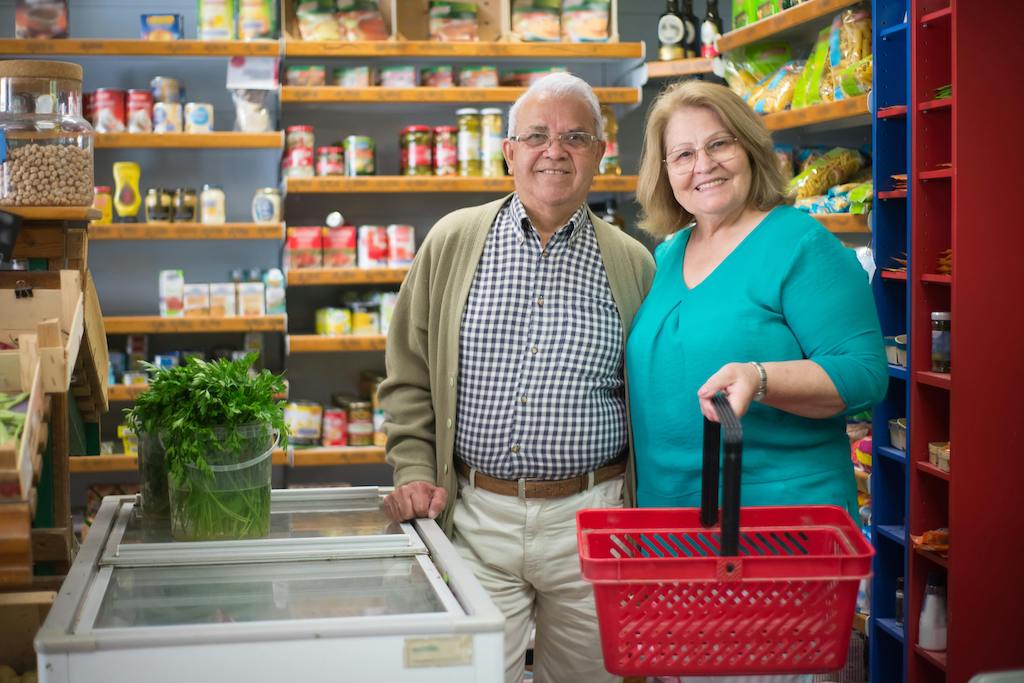
How this convenience store business plan sample was created
Create your tailored convenience store business plan effortlessly with our AI Business Plan Generator. Simply click 'Generate your business plan' and follow a series of targeted questions about your convenience store venture. Our advanced AI technology will analyze your inputs to craft a business plan that perfectly matches your convenience store's goals and needs. This streamlined and quick process usually completes in just 5-10 minutes, producing a detailed and well-organized plan. Our platform offers the ability to customize and refine your plan, ensuring it precisely reflects your unique vision for your convenience store. Upon completion, your plan is available for download, providing a clear and concise roadmap for launching and expanding your convenience store. Leverage our AI business plan generator, specially designed for convenience store enterprises, to enhance your strategic planning.

Generate your custom convenience store business plan in minutes!
Convenience store business plan sample, executive summary, business description, market research and analysis, swot analysis.
- Organizational Structure and Management Team
Products or Services
Marketing and sales strategy, operations plan, financial projections, risk analysis.
QuickStop Convenience Store, strategically nestled in the heart of Austin, Texas, embodies the simplicity and efficiency of modern convenience retail. Dedicated to providing an extensive range of products and services tailored to the fast-paced lifestyles of its patrons, QuickStop takes pride in its ability to offer quick and convenient solutions with a personalized touch. This Executive Summary encapsulates the essential components of our business plan, delineating the direction and future aspirations of QuickStop.
Our vibrant retail establishment caters to a diverse demographic, including a mix of local residents, commuting professionals, and transient customers seeking expedited purchasing experiences. This blend of consumers is central to our business model, which revolves around a comprehensive product assortment that includes snacks, beverages, tobacco products, lottery tickets, basic groceries, household items, and more. Supplementing our product offerings, QuickStop also provides value-added services such as ATM access, bill payments, mobile phone top-ups, and postage services, emphasizing the multifaceted nature of our operations.
QuickStop thrives amidst formidable competitors in the sector, such as national chains like 7-Eleven and Circle K, along with local entities CityMart Express and Neighborhood Mini Market. While these rivals bring brand recognition and widespread presence, QuickStop's differentiation lies in our commitment to community-centric engagement, premium customer service, and notably, adaptability—keys to winning the hearts and patronage of our customers.
Operating as a Limited Liability Company, QuickStop is steered by a robust management team with extensive industry-specific expertise. Samantha Lee, our General Manager, steers strategic planning with over a decade of experience in the sector. Operations Manager Alex Johnson guarantees efficiency in daily activities, while CFO Maria Gonzalez oversees our financial health. Additionally, Marketing Director David Singh is on the frontline, pioneering growth through innovative campaigns, and HR Manager Emily Wang ensures we have the best talent concentrated on delivering outstanding service.
Our marketing and sales strategy is multifaceted and deeply integrated with community engagement. We leverage social media, loyalty programs, and SEO to drive traffic while maintaining a firm pulse on seasonal trends and local alliances. Flyers and local ad spaces further solidify our footing in the Austin market.
At QuickStop, the operational workflow is fine-tuned to precision, maintaining meticulous quality control and inventory management protocols to ensure excellence at every transaction. Our supplier relationships, particularly with FreshGoods Inc. and SnackHaven Distributors, are strategically crafted to support a responsive and reliable inventory replenishment system.
Financially, QuickStop is positioned for prosperity, with sales forecasted to rise from $500,000 in the first year to $700,000 by year five. With projected net profits increasing from $50,000 to $120,000 over the same period, our robust business model anticipates sustainable growth. The financial projections are rooted in conservative estimations and lay out a roadmap for the financial trajectory of our enterprise.
However, we are cognizant of the challenges that lie ahead. Our risk analysis identifies potential market fluctuations, operational hurdles, and financial unknowns that could inhibit progress. To combat these, we have formulated comprehensive mitigation strategies and contingency plans, ensuring QuickStop remains resilient.
To conclude, QuickStop Convenience Store is positioned as a burgeoning business with a clear vision. Through a combination of strategic managerial oversight, customer-centric operational tactics, and a strong financial foundation, we are ready to carve a niche in the convenience store industry. QuickStop is not just a store but a hub for Austin's community—a testament to our dedication to delivering convenience and quality, day in and day out.

QuickStop Convenience Store is strategically situated in the bustling neighborhood of Austin, Texas, offering local residents and commuters a one-stop shop for their daily essentials. Our enterprise falls under the vibrant convenience store industry—a sector known for providing quick access to a range of everyday items along with additional services to cater to the fast-paced lives of consumers. This sector thrives on strategic locations, extended hours of operation, and a variety of products catering to immediate needs.
The inception of QuickStop Convenience Store was driven by a recognition of the opportunity within the community for timely and efficient access to goods and services that cater to various needs throughout the day. Established in 2018, QuickStop was founded with the purpose of providing residents with a friendly, neighborhood convenience store that not only offers a wide range of products but does so with exceptional customer service that makes every transaction feel personal and valued. Over the years, QuickStop has become a trusted name in the area, exhibiting steady growth and an expanding array of offerings.
Our mission is to be the leading local convenience store that consistently meets the daily needs of our customers with speed, convenience, and friendly service. We aim to offer a diverse range of high-quality products and supplementary services that make life easier and more enjoyable for our customers. We believe that convenience should not come at the cost of experience, which is why we strive to ensure that every customer leaves our store satisfied.
QuickStop Convenience Store operates as a Limited Liability Company (LLC), ensuring a flexible business structure that shields its members from personal liability while allowing for the efficient management and distribution of profits. This legal structure is pivotal as it aligns with our goals of growth and adaptability, providing the protections and framework necessary for long-term sustainability and scalability.
Looking at the long-term potential of QuickStop Convenience Store, we are poised to become a cornerstone establishment in our local area and potentially in neighborhoods beyond. The convenience store industry is exceptionally robust and continues to expand as the modern consumer seeks more accessible and immediate solutions for their purchasing needs. With a focus on expanding product lines, integrating technology for better service provision, and maintaining a connection with the community, QuickStop is situated perfectly to capitalize on existing market trends.
Our long-term objectives include deepening our understanding of customer preferences through engagement and feedback systems. We aim to leverage this information to tailor our inventory and services specifically to the evolving needs of our customer base. In addition, the potential introduction of private label goods and e-commerce components also presents opportunities for growth. Innovation in product offerings and accessibility, such as the adoption of online ordering and delivery services, stands as a promising avenue for QuickStop's expansion and increased market share.
By maintaining vigilance on industry trends and customer demands, QuickStop Convenience Store is committed to proactive growth and continuous improvement in all aspects of our operations. We believe that with our customer-centric approach, adaptive business model, and dedication to a high-quality shopping experience, QuickStop will not only remain relevant but thrive as a leading convenience store in our community and beyond into the future.
The convenience store industry is a major segment of the retail sector characterized by its capability to meet the immediate daily needs of consumers seeking quick, convenient shopping experiences. This industry includes establishments that primarily retail a range of merchandise like snacks, beverages, tobacco, and grocery items without the depth of assortment typically found in supermarkets. The industry is witnessing a rise in demand for healthier snacks, ready-to-eat meals, and specialty beverages. Notably, there is an increasing integration of technology for streamlining in-store operations and enhancing customer experiences through self-checkout systems and digital loyalty programs.
As of recent analysis, the industry holds a significant market size with an annual growth rate averaging approximately 2-3% over the past five years. This growth is being sustained by consumers' growing preference for quick service and the rising trend of small basket shopping. The industry is expected to maintain its growth, propelled by economic stability and the continuous need for convenient shopping options.
The target market for QuickStop Convenience Store encompasses local residents and commuters within the vicinity, ranging in age from 18 to 55 years old, which forms a diverse demographic spectrum including students, professionals, and blue-collar workers. The local consumer base is estimated at around 25,000 individuals with a growth potential pegged to community expansion and urban development plans. These consumers exhibit a need for on-the-go products, with convenience playing a pivotal role in their purchasing habits.
Market demands are primarily driven by the increasing pace of life that leaves less time for traditional shopping experiences. Consumers are leaning heavily towards grab-and-go foods, quality coffee offerings, and accessible essential items for unplanned or last-minute needs. An emerging market trend is a preference for local and artisan products, which suggests consumers are becoming more discerning and value-driven in their quick purchase decisions.
Patterns in the industry underscore the importance of location, store layout, and product mix. Recent trends indicate a significant upswing in the sale of premium snack items and organic products. Moreover, there is a notable shift towards digital and mobile payment methods with increased consumer expectations for payment convenience and transaction speed.
Our direct competitors include high-profile national chains such as 7-Eleven and Circle K, which boast extensive networks and economies of scale, providing them with notable strengths including brand recognition and a broad product range with competitive pricing. Their weaknesses often lie in a perceived lack of personalized service and less focus on local product offerings. Other competitors include smaller local enterprises like CityMart Express and Neighborhood Mini Market, whose strengths are their community-focused positioning and agility. Yet, their weaknesses can be in the form of limited marketing resources and lesser-known brands. Market share among competitors is generally driven by location advantage, product variety, and price competitiveness.
QuickStop Convenience Store must navigate potential barriers upon entry, which include high start-up costs associated with securing prime retail locations and the establishment of a robust supply chain. Additionally, stiff competition from established chains, adherence to regulatory requirements, and the need for effective marketing strategies to compete with well-known brands are hurdles to overcome. Overcoming these barriers requires diligent market analysis, strategic partnerships, astute financial planning, and the development of a strong local brand identity to differentiate ourselves from larger chains while aligning our offerings to the needs and demands of our target market.

Organizational Structure and Management
The organizational structure of QuickStop Convenience Store is designed to ensure both operational efficiency and customer service excellence. The store operates with a clear and functional hierarchy, reflected in an organizational chart which outlines roles from management to frontline employees. At the top of this hierarchy is the General Manager, who oversees all operations and reports to the LLC members. Beneath the General Manager are the Operations Manager, Chief Financial Officer, Marketing Director, and HR Manager. These managers lead their respective departments and are supported by assistant managers, clerks, and staff who handle day-to-day operations.
The management team comprises highly skilled professionals with robust backgrounds in retail and business management. Samantha Lee, serving as the General Manager, holds a Bachelor of Business Administration and brings over ten years of retail management experience. She is responsible for the overall performance of the store, leading strategic planning, and ensuring that business objectives are met. Alex Johnson, the Operations Manager, has a Diploma in Retail Management and seven years of experience in convenience store operations. His responsibilities include overseeing the day-to-day running of the store operations, inventory management, and ensuring that all functions are carried out efficiently.
Maria Gonzalez acts as the Chief Financial Officer, a Certified Public Accountant with five years of experience in financial planning and analysis specifically in the retail sector. She manages QuickStop's finances, including budgeting, accounting, and financial reporting. The Marketing Director, David Singh, with a Master’s in Marketing and eight years of experience, is tasked with handling the store's marketing efforts, branding, and customer outreach to drive sales and build brand loyalty. Emily Wang, the HR Manager with a Bachelor's in Human Resources and a certified PHR, is responsible for human resources management, including recruitment, training, and compliance with labor laws.
Currently, the store is staffed by two full-time managers, eight clerks who work in shifts to provide constant coverage during store hours, and two part-time staff for the weekends and peak times. As the business grows, QuickStop will require additional clerks and possibly another assistant manager to maintain the desired level of customer service and handle increased operational workload.
Human resources policies at QuickStop Convenience Store prioritize fair employment practices, employee development, and a positive work environment. The store follows an equal opportunity employment policy, provides comprehensive training programs, and offers competitive wages and benefits to attract and retain high-quality staff. QuickStop ensures compliance with all employment laws and emphasizes the importance of health and safety in the workplace. Acknowledging the critical role of employees in the store’s success, regular performance reviews and feedback sessions are conducted to foster professional growth and job satisfaction.
The company also engages external advisors and consultants for specialized advisory when needed. A local retail business consultant assists with optimizing store layout and product placement strategies. An accounting firm is retained for annual audits and complex tax matters, and a legal firm advises on compliance, licensing, and corporate governance issues. These relationships guarantee that QuickStop maintains high standards and updated industry practices in all its operations.
In conclusion, QuickStop Convenience Store's organizational structure and management are thoughtfully designed to ensure the business operates efficiently, responds adeptly to market demand, and lays a solid foundation for future growth. With a clear hierarchy, a strong management team, a plan for staffing needs, and systems for human resource management, QuickStop is well-equipped to achieve its strategic goals and serve the community effectively.
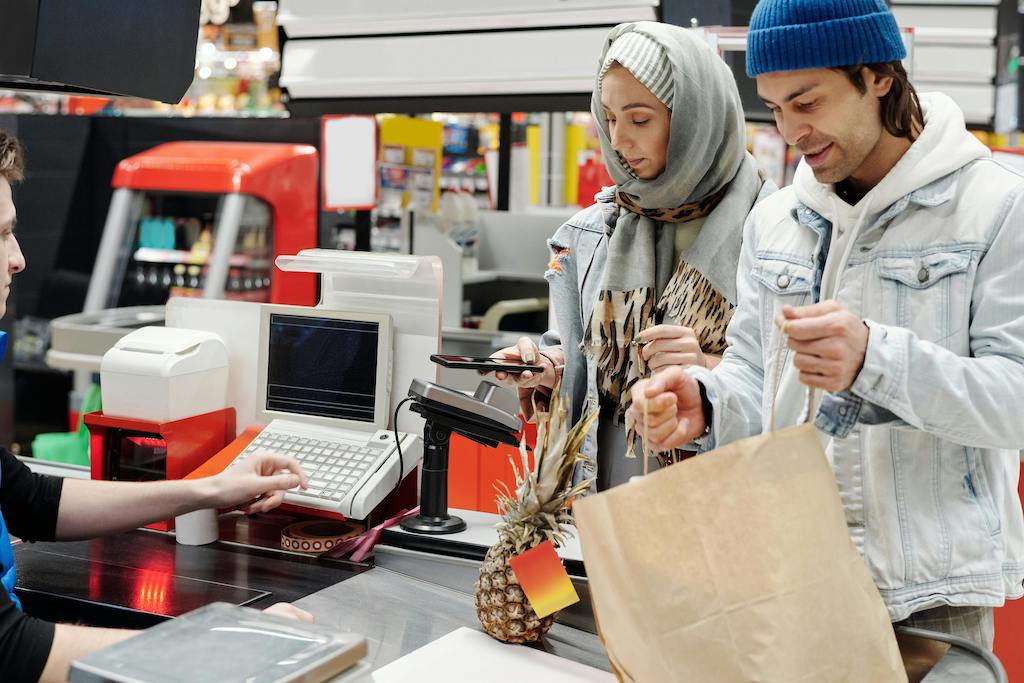
QuickStop Convenience Store offers a diverse range of products and services meticulously tailored to meet the basic and instant needs of our customers. Our product portfolio includes an assortment of snacks such as chips, candies, and chocolates, various types of beverages including sodas, juices, and energy drinks, and a selection of alcoholic drinks, where permitted by licensing laws. We stock basic grocery items like bread, milk, and eggs, alongside household necessities such as cleaning supplies, toiletries, and over-the-counter medications. For customers seeking immediate gratification, we provide ready-to-eat foods like hot dogs, sandwiches, and pastries. Additional services include lottery ticket sales, an ATM, bill payment options, mobile phone top-ups, and the availability of postage stamps, all catering to the convenience of our customers.
Our unique selling points center on providing a one-stop-shop experience with quick and seamless transactions. In contrast to larger supermarkets, QuickStop offers a more personal shopping encounter with the convenience of avoiding long lines, making it an ideal spot for quick in-and-out shopping. The competitive advantage lies in our extended hours of operation, catering to early birds and night owls alike when most other retailers are closed.
Currently, QuickStop is in the operational and expansion phase. We plan to continually assess and evolve our product offerings based on consumer trends and feedback, ensuring that we meet and exceed our customers' expectations. Future plans involve the potential introduction of organic and locally-sourced products to meet growing demand for health-oriented and community support-focused offerings. The development of a QuickStop branded line of products is also being considered to enhance customer loyalty and promote a unique store identity.
In terms of intellectual property, QuickStop utilizes trade dress protection for the distinctive design and appearance of our store interiors. Additionally, should we embark on creating our own branded products, we will pursue the necessary trademark registrations to protect our brand and proprietary items securely.
Our production process for proprietary ready-to-eat foods involves strict adherence to health and safety regulations, with all food items prepared fresh daily using quality ingredients. The process is designed for efficiency, ensuring that customers always have access to freshly made snacks and meals. Non-food items arrive pre-packaged from our variety of suppliers and are stocked promptly on our shelves for immediate sale.
Supplier relationships are a critical component of QuickStop’s operational model. We partner with a blend of local producers and national distributors to ensure a steady supply of inventory. FreshGoods Inc. is our primary supplier for perishable grocery items due to their commitment to freshness and prompt delivery services. SnackHaven Distributors is our key partner for snack products, offering a wide range and competitive wholesale pricing. We also work closely with several local bakeries and food producers to source our ready-to-eat items, ensuring that we support local businesses while providing our customers with the highest quality foods.
Overall, QuickStop Convenience Store’s current product and service offerings are aligned with market needs, with plans in place to expand and innovate as customer preferences evolve. Our relationship with suppliers ensures a consistent supply of high-quality products, and our store remains dedicated to maintaining the exceptional service that our customers have come to expect. The pursuit of distinctive products and the development of a proprietary line will further establish QuickStop as a leader in the convenience store sector.
QuickStop Convenience Store's marketing and sales strategies are devised to attract and retain a loyal customer base while maximizing revenues and market share within the Austin neighborhood and its surrounding areas. Our approach is multifaceted, encompassing targeted advertising, strategic sales initiatives, competitive pricing, and excellent customer service.
Our marketing strategy utilizes a combination of traditional and digital media to reach a broad spectrum of customers. We leverage the power of social media platforms such as Facebook and Instagram to create targeted campaigns that resonate with our demographic. Local search engine optimization (SEO) is crucial in ensuring that QuickStop appears prominently in search results when potential customers are looking for convenience store options nearby. Our presence on Google Maps and other navigational apps is optimized for maximum visibility, facilitating ease of access for mobile users on the go.
To amplify brand awareness, local community events sponsorship and participation are part of our outreach efforts. This not only enhances our reputation as a community-oriented business but also allows us to network directly with potential customers in less formal settings. In-store marketing employs clear signage for promotions and utilizes point-of-sale displays to encourage impulse buys. Seasonal promotions and discounts create buzz and increase foot traffic during peak shopping seasons.
Our sales strategy focuses on providing a seamless, quick transaction experience. This is supported by a well-trained sales team knowledgeable about the product range and able to rapidly assist customers in finding items, providing product information, and answering queries. Employees are trained to upsell when opportunity arises, such as suggesting complementary products. We also conduct periodic sales training to ensure our team is adept at handling various customer scenarios and up-to-date with new promotions.
The pricing strategy at QuickStop Convenience Store entails maintaining competitive pricing while offering exceptional value. We conduct regular competitive analyses to ensure our prices are in line with market expectations without compromising profitability. Promotional pricing and bundle deals are employed to increase sales volume, particularly for high-margin items or overstocked products.
Distribution channels include in-store purchasing as the primary channel, but we are exploring the introduction of an online ordering system with local delivery options, aligning with the trend towards e-commerce. This augmentation of our distribution strategy would appeal to tech-savvy customers and those with mobility constraints.
Promotion and advertising efforts are carefully planned throughout the year. We allocate budget for social media advertising, distribute flyers in local high traffic areas, and place ads in community publications. Strategic in-store promotional campaigns, such as "deal of the day" or "happy hour discounts," incentivize repeat visits. Moreover, we plan to introduce a loyalty program that rewards frequent customers with discounts and exclusive offers, encouraging regular patronage.
Customer service is paramount at QuickStop, and our policies reflect a commitment to exceed customer expectations. Staff are empowered to address and resolve customer complaints promptly and efficiently. We also implement a satisfaction guarantee on our house-prepared food items to ensure customers feel confident in their purchases. Feedback is actively solicited through in-store and online channels, demonstrating our dedication to listening to and acting upon the input of our clientele.
In sum, QuickStop Convenience Store’s comprehensive marketing and sales strategy, encompassing targeted advertising, competitive pricing, expanded distribution, robust promotions, and uncompromising customer service, is designed to foster growth by attracting new customers, retaining existing ones, and ensuring all receive the convenient and pleasant shopping experience they value.

The Operations Plan of QuickStop Convenience Store outlines the essential processes and systems in place that allow us to provide consistent, high-quality service and products to our customers. Our operational workflow is designed for efficiency, ensuring that daily business activities from opening to closing are executed effectively to meet customer demand.
Daily operations commence before sunrise with our opening team preparing the store for the day. This includes stocking shelves, ensuring cleanliness throughout the store, and preparing fresh food items for our ready-to-eat section. Throughout the day, clerks engage in customer service, manage checkouts, restock items as necessary, and maintain the overall appearance and safety of the store. Our closing team conducts end-of-day cleaning, accounts for inventory, and prepares the store for the following day.
The service delivery process is expedited by clearly defined roles and responsibilities. For food items, we follow a standard process that includes the selection of quality ingredients, adherence to food safety standards during preparation, packaging, and compliance with expiration management. Non-food items are received from suppliers, logged into our inventory system, and promptly placed on the shelves or designated storage areas.
Quality control measures are vital to our operation. We have established protocols to regularly inspect the quality of products received and monitor the freshness of items on the shelves. Food preparation areas are subject to daily sanitation audits, and employees must complete regular food handling and safety training. Customer feedback is also an essential part of our quality control as it provides firsthand insight into their experience and the quality they perceive.
Inventory management is streamlined through the use of an automated tracking system. This system enables us to monitor sales patterns and stock levels effectively, ensuring optimal inventory turnover and minimizing waste. Automatic reordering thresholds are set for high turnover items, and a bi-weekly review of inventory is conducted to adjust ordering according to demand fluctuations and seasonal variations.
Regarding supply chain management, QuickStop maintains strong relationships with a mix of local and national suppliers to ensure a continuous supply of products. We have negotiated terms that allow for flexible ordering, taking into consideration the lead times and delivery schedules to prevent stockouts. Our approach includes regular evaluations of supplier performance, ensuring that they meet our standards for timely delivery and product quality.
QuickStop’s facilities maintain a layout designed for convenience and speed of service, with a flow that naturally guides customers through the store. The equipment needs are continuously assessed, ensuring that all machinery, such as cash registers, refrigeration units, and food preparation equipment, are functioning efficiently. The store is equipped with surveillance systems for security purposes and positioned to provide coverage across the store, both indoors and outdoors. The facility also features storage areas strategically located to maintain organization and accessibility for employees restocking inventory.
Our operation plan exists as a living document, hyper-aware of the changing needs of the business and our customers. As QuickStop Convenience Store grows, we are prepared to upscale our operations, incorporate technology such as self-checkout machines, and refine our processes to ensure that we not only meet but exceed market demands and customer expectations. The agility and dedication embedded in our operations plan underscore our commitment to offering outstanding convenience, service, and product availability.
The Financial Projections section of QuickStop Convenience Store's business plan illustrates our expectation of financial performance over the next three to five years, outlining a detailed forecast that includes sales, profit and loss, cash flow, balance sheet, and a breakeven analysis. These projections are based on historical data, current market dynamics, competitive landscape, and projected growth of the convenience store industry.
Sales Forecast:
Over the next five years, we anticipate consistent growth in sales driven by the introduction of new product lines, the implementation of marketing strategies, and expanding customer base. Our sales forecast is as follows:
- Year 1: $500,000 - Year 2: $550,000 - Year 3: $600,000 - Year 4: $650,000 - Year 5: $700,000
This growth trajectory takes into account the increasing average transaction size and the expected rise in foot traffic due to local population growth and enhanced store visibility.
Profit and Loss Projection:
Our projected profit and loss accounts for direct costs of goods sold, operating expenses such as wages, utilities, insurance, marketing, and administrative expenses. Net profit is expected to improve as sales increase and optimized operational efficiencies take effect:
- Year 1: Net Profit of $50,000 - Year 2: Net Profit of $65,000 - Year 3: Net Profit of $80,000 - Year 4: Net Profit of $100,000 - Year 5: Net Profit of $120,000
The profit margin is anticipated to grow gradually as brand recognition strengthens and customer loyalty increases.
Cash Flow Projection:
Our cash flow projections indicate that the store will maintain adequate liquidity to sustain operations and fund growth initiatives. Initial capital investments and a business line of credit serve as buffers for managing inventory and covering any unforeseen costs. Positive net cash flows are projected by the first year end:
- Year 1: Net Cash Flow of $20,000 - Year 2: Net Cash Flow of $30,000 - Year 3: Net Cash Flow of $50,000 - Year 4: Net Cash Flow of $70,000 - Year 5: Net Cash Flow of $90,000
Balance Sheet Projection:
Assets are expected to grow along with the business, including increases in inventory and potential capital investments into store fixtures and technology. Liabilities, largely comprising accounts payable and the line of credit, will be managed prudently to maintain a healthy debt-to-equity ratio.
Break-even Analysis:
The breakeven point, where total revenue equals total expenses, is projected to occur within the first year of operation. We anticipate annual fixed costs to be approximately $450,000, with a forecasted average margin of about 30%. This margin will result in a breakeven sales level of around $480,000, which we expect to exceed within the first year, confirming the viability of QuickStop Convenience Store.
Financial Assumptions and Considerations:
The financial projections are based on several assumptions:
- A steady inflation rate not exceeding 2.5% per annum. - Consistent consumer spending within the convenience store sector. - No significant economic downturn affecting local consumer spending habits. - An increase in sales following the introduction of loyalty programs and marketing efforts.
Considerations also include potential market disruptions and competitive actions which may necessitate adjustments to our pricing or product offerings. Investment in marketing and store enhancements may increase expenses in the short term but are expected to generate long-term gains. Additionally, we will allocate funds to reserve for unforeseen events to ensure financial stability.
Together, these financial projections and underlying assumptions are employed to manage expectations, steer strategic decisions, and secure the financial health and growth prospects of QuickStop Convenience Store.

The success of QuickStop Convenience Store is contingent upon effective identification and management of potential risks that could impact our operations. Our risk analysis considers various uncertainties across market, operational, and financial domains, and outlines prudent measures to mitigate these risks and contingency plans to address potential adverse scenarios.
Identification of Potential Risks:
Market Risks:
- Economic Downturns: A decline in the economy can reduce consumer spending and affect sales volume. - Competition: New entrants or more aggressive strategies from existing competitors could erode our market share. - Technological Disruption: A failure to keep pace with retail technology could lead to a competitive disadvantage. - Changes in Consumer Preferences: An inability to adapt to changing tastes and preferences can result in lost sales.
Operational Risks:
- Supply Chain Disruptions: Unforeseen events such as natural disasters or global pandemics could interrupt our supply chain. - Employee Turnover: High levels of staff turnover can lead to increased costs and a decline in service quality. - Equipment Failure: Malfunctions or breakdowns can disrupt store operations. - Security Breaches: Theft, shoplifting, and cyberattacks pose risks to assets and information.
Financial Risks:
- Cash Flow Shortages: Insufficient liquidity could hamper the business’s ability to meet its obligations. - Cost Overruns: Unexpected increases in operational costs could affect profitability. - Interest Rate Fluctuations: Changes in interest rates could increase the cost of borrowing.
Risk Mitigation Strategies:
To mitigate market risks, we implement thorough market research to stay ahead of trends. We conduct regular competitive analysis to adjust our strategies promptly. Aggressive marketing and loyalty programs are used to retain existing customers and attract new ones.
Operational risks are circumvented through a robust supply chain featuring multiple suppliers to prevent bottlenecks, fostering a positive workplace to retain employees, maintaining equipment regularly, and employing stringent security measures, including surveillance systems and employee training on loss prevention.
Financial risks are mitigated by maintaining a strict budget, monitoring cash flow projections closely, and managing a cash reserve for emergencies. To buffer against interest rate changes, we seek to lock in favorable rates for any required loans.
Contingency Plans:
Our contingency plans are designed to ensure business continuity under various adverse scenarios:
- Economic Downturns: We plan to increase promotions and introduce budget-friendly product lines to maintain sales volume. - Competition: Continual service and product enhancements and diversification to stay competitive. - Supply Chain Disruptions: Alternative local suppliers and stockpiling of non-perishable high-turnover items will be used to manage supply risks. - Employee Turnover: Cross-training employees and maintaining an active pool of qualified candidates to fill vacancies rapidly.
Insurance and Legal Considerations:
Insurance protection forms a critical part of risk management. QuickStop Convenience Store maintains comprehensive insurance coverage, including general liability, property insurance, workers' compensation, business interruption insurance, and cyber liability insurance to protect against a range of potential threats. Additionally, we ensure all business activities comply with federal, state, and local laws—particularly those concerning licensing for food and alcohol sales, employment practices, and health and safety regulations.
In summary, by identifying risks across various spectrums and setting mitigation and contingency measures, QuickStop Convenience Store not only prepares to handle challenges but also positions itself to adapt and thrive even under difficult circumstances. Legal compliance and appropriate insurance safeguards further shield the business from unforeseen liabilities, fortifying its resilience in the face of risks.

More business plan templates


Gym business plan

Insurance agency business plan

Moving company business plan

Item added to your cart
Here is a free business plan sample for a convenience store.

Have you been toying with the idea of opening a convenience store but feel overwhelmed about where to start?
Look no further, as we're about to guide you through a comprehensive business plan tailored for a convenience store.
Creating a robust business plan is a crucial step for any aspiring entrepreneur. It serves as a roadmap, outlining your vision, objectives, and the strategies you'll employ to turn your retail dream into a thriving reality.
To streamline your planning process, take advantage of our convenience store business plan template. Our team is also on standby to provide a free review and fine-tuning to ensure your plan is on point.

How to draft a great business plan for your convenience store?
A good business plan for a convenience store must be tailored to the unique aspects of retail operations and customer convenience.
To start, a comprehensive market overview is crucial. This should include current statistics and an examination of emerging trends in the retail sector, as illustrated in our convenience store business plan template .
Your business plan should articulate your vision clearly. Define your target market (such as neighborhood residents, commuters, students), and establish your store's distinctive appeal (24/7 operation, product variety, local products, etc.).
Market analysis is the next critical component. This requires a thorough understanding of the local competitive landscape, consumer buying habits, and the specific demands of the area your store will serve.
For a convenience store, it's important to detail the range of products you will carry. This includes everyday essentials, snacks, beverages, and any niche products that cater to local preferences or gaps in the market.
The operational plan is vital. It should outline the store's location, layout, inventory management, supplier relationships, and logistics.
Given the nature of a convenience store, factors such as product turnover, shelf life, and inventory management are particularly important.
Then, delve into your marketing and sales strategies. How do you plan to attract customers and encourage repeat business? Discuss promotional tactics, loyalty programs, and potential ancillary services (like ATM, lottery tickets, or bill payment services).
Incorporating digital strategies, such as an online presence or delivery options, can also be a significant advantage.
The financial section is a cornerstone of the plan. It should cover startup costs, revenue projections, operating expenses, and the point at which the business will become profitable.
Convenience store margins can be tight, so precise financial planning and understanding your cash flow is essential. For assistance, refer to our financial forecast for a convenience store .
Compared to other business plans, a convenience store plan must address specific factors like extended operating hours, the need for robust security measures, and the management of a diverse product inventory.
A well-crafted business plan will not only help you clarify your strategy and operations but also attract investors or secure loans.
Lenders and investors are looking for detailed market analysis, sound financial projections, and a clear operational strategy for managing a convenience store.
By presenting a thorough and substantiated plan, you show your dedication to the success of your enterprise.
To achieve these goals while saving time, you can fill out our convenience store business plan template .

A free example of business plan for a convenience store
Here, we will provide a concise and illustrative example of a business plan for a specific project.
This example aims to provide an overview of the essential components of a business plan. It is important to note that this version is only a summary. As it stands, this business plan is not sufficiently developed to support a profitability strategy or convince a bank to provide financing.
To be effective, the business plan should be significantly more detailed, including up-to-date market data, more persuasive arguments, a thorough market study, a three-year action plan, as well as detailed financial tables such as a projected income statement, projected balance sheet, cash flow budget, and break-even analysis.
All these elements have been thoroughly included by our experts in the business plan template they have designed for a convenience store .
Here, we will follow the same structure as in our business plan template.

Market Opportunity
Market overview and statistics.
The convenience store industry is a vital part of the retail landscape, offering quick and easy access to a variety of products.
As of recent data, the global convenience store market is valued at over 1 trillion dollars, with projections indicating continued growth. This is driven by the fast-paced lifestyle of consumers who seek immediate access to goods.
In the United States alone, there are over 150,000 convenience stores, accounting for significant revenue in the retail sector. These stores are integral to daily life, providing essential items to millions of customers.
The robust presence of convenience stores underscores their importance in the retail industry and their substantial contribution to the economy.
Industry Trends
The convenience store sector is witnessing several key trends that are shaping its future.
Healthier options are becoming more prevalent, with stores increasing their offerings of fresh fruit, salads, and health-oriented snacks to cater to health-conscious consumers.
Technology is playing a major role, with the rise of contactless payments, self-checkout kiosks, and sophisticated inventory management systems that streamline operations.
Convenience stores are also expanding their services to include postal, banking, and foodservice options, transforming them into community hubs.
Additionally, the integration of e-commerce and home delivery services is becoming more common, as stores adapt to the digital preferences of consumers.
Environmental sustainability is another focus, with stores implementing eco-friendly practices, such as reducing plastic usage and offering more sustainable product choices.
These trends highlight the industry's adaptability and its commitment to meeting the evolving needs of modern consumers.
Key Success Factors
Several factors contribute to the success of a convenience store.
Location is paramount; stores situated in high-traffic areas or close to residential neighborhoods tend to perform better due to increased accessibility for customers.
A diverse product mix that caters to the immediate needs of customers, including a range of food, beverages, household items, and personal care products, is essential for attracting a broad customer base.
Extended hours of operation are also a significant advantage, as they offer customers flexibility and convenience around the clock.
Customer service is crucial, with friendly and efficient staff enhancing the shopping experience and encouraging repeat visits.
Lastly, effective supply chain management and cost control are vital for maintaining profitability and competitive pricing in a market with thin margins.
By focusing on these key areas, a convenience store can thrive and maintain a loyal customer base in a competitive retail environment.
The Project
Project presentation.
Our convenience store project is designed to serve the needs of a busy, health-conscious community. Strategically located in a high-traffic urban area or near residential complexes, this store will offer a diverse range of products including organic, vegan, and gluten-free options. The inventory will include everyday essentials, snacks, beverages, fresh produce, and household items, all curated to provide a one-stop shopping experience.
We will emphasize the convenience of shopping by offering extended hours, self-checkout options, and a user-friendly layout to ensure a quick and efficient shopping experience.
Our convenience store aims to be more than just a place to buy goods—it will be a community hub that understands and caters to the unique needs of its customers, providing a tailored shopping experience.
Value Proposition
The value proposition of our convenience store is centered on providing a carefully selected assortment of products that cater to the health and convenience needs of our customers. We offer a unique blend of traditional convenience items alongside healthier, specialty options not commonly found in typical convenience stores.
Our commitment to quality, variety, and accessibility ensures that our customers can find what they need quickly and easily, making their daily routines more manageable. We aim to exceed expectations by offering exceptional customer service and a pleasant shopping environment.
By focusing on the needs of our community, we strive to establish our store as a reliable and indispensable resource for our customers' busy lives.
Project Owner
The project owner is an entrepreneur with a keen insight into the evolving retail landscape and the changing needs of consumers. With a background in retail management and a passion for customer service, they are dedicated to creating a convenience store that stands out for its commitment to providing a diverse range of products and services.
Understanding the importance of convenience and health in today's fast-paced world, the owner is determined to offer a shopping experience that aligns with the values and schedules of the store's clientele.
Driven by a vision of community engagement and a dedication to adaptability, the owner is the driving force behind this project, aiming to create a convenience store that becomes an essential part of the local community's daily life.
The Market Study
Market segments.
The market segments for this convenience store are diverse and cater to a wide range of customer needs.
Firstly, there are local residents who require easy access to everyday items such as groceries, personal care products, and household essentials.
Secondly, commuters and workers in the area who need quick grab-and-go options like snacks, beverages, and ready-to-eat meals.
Additionally, the market includes individuals seeking specialty products that may not be available in larger supermarkets, such as niche snacks, local goods, and international items.
Lastly, the store can attract a segment of health-conscious consumers by offering a selection of organic, natural, and health-oriented products.
SWOT Analysis
A SWOT analysis of this convenience store project highlights several key factors.
Strengths include a strategic location, extended operating hours, and a wide variety of products that cater to immediate consumer needs.
Weaknesses might involve limited space for inventory, competition with larger retail chains, and the challenge of maintaining product freshness.
Opportunities could arise from offering unique services such as lottery tickets, postal services, or bill payment options, as well as from the potential to partner with local businesses for exclusive product offerings.
Threats include the rise of online shopping, potential economic downturns affecting consumer spending, and the constant need to adapt to changing consumer preferences.
Competitor Analysis
Competitor analysis in the convenience store sector indicates a highly competitive environment.
Direct competitors include other local convenience stores, supermarkets, and gas stations with attached retail outlets.
These competitors vie for customer loyalty by offering convenience, competitive pricing, and a range of products.
Potential competitive advantages for our store include personalized customer service, a curated selection of products, and loyalty programs.
Understanding the strengths and weaknesses of competitors is crucial for carving out a niche in the market and ensuring customer retention.
Competitive Advantages
Our convenience store's competitive edge lies in our commitment to providing a personalized shopping experience.
We offer a carefully selected assortment of products, including fresh, locally-sourced items and unique international goods that are not readily available elsewhere.
Our focus on customer convenience is exemplified by our extended hours of operation, quick checkout processes, and additional services like utility payments and mobile top-ups.
We also prioritize customer engagement through community events and promotions, fostering a sense of loyalty and community around our brand.
You can also read our articles about: - the customer segments of a convenience store - the competition study for a convenience store
The Strategy
Development plan.
Our three-year development plan for the convenience store is designed to establish a strong foothold in the community.
In the first year, our goal is to build a loyal customer base by offering a wide range of products that cater to everyday needs, with a focus on convenience and competitive pricing.
The second year will be geared towards expanding our product lines, including the introduction of fresh food options and locally sourced items to differentiate ourselves from competitors.
In the third year, we aim to leverage technology by introducing a mobile app for easy shopping and to explore the possibility of a second location to increase our market reach.
Throughout this period, we will prioritize customer service, store cleanliness, and an efficient shopping experience to ensure customer retention and store growth.
Business Model Canvas
The Business Model Canvas for our convenience store targets a broad customer segment, including local residents, commuters, and passersby seeking quick and easy access to a variety of products.
Our value proposition is centered on providing a convenient shopping experience, with a diverse product range and extended operating hours.
We will conduct sales through our physical storefront and potentially an online platform, utilizing key resources such as our strategic location, inventory management system, and dedicated staff.
Key activities include inventory stocking, sales operations, and customer service.
Our revenue streams will be generated from the sale of convenience goods, while our costs will be associated with inventory procurement, staffing, and operational expenses.
Find a complete and editable real Business Model Canvas in our business plan template .
Marketing Strategy
Our marketing strategy is focused on positioning our convenience store as the go-to place for quick and easy shopping solutions.
We plan to engage with the community through local events, sponsorships, and partnerships with other businesses.
Our promotional efforts will include loyalty programs, weekly specials, and targeted advertising in local media and online platforms.
We will also utilize social media to connect with customers, share promotions, and gather feedback to continuously improve our offerings.
Risk Policy
The risk policy for our convenience store includes measures to mitigate operational, financial, and security risks.
We will implement strict inventory control to prevent stockouts and overstocking, and we will ensure that all employees are trained in loss prevention techniques.
Financial risks will be managed through careful budgeting and cash flow monitoring. Security systems will be in place to protect against theft and ensure the safety of both customers and staff.
We will also carry comprehensive insurance to protect against unforeseen events and liabilities.
Why Our Project is Viable
We believe that our convenience store project is viable due to the constant demand for quick and accessible shopping options.
Our commitment to providing a wide range of products, extended hours, and exceptional customer service positions us to become a staple in the local community.
We are adaptable and ready to evolve with changing consumer trends to ensure the long-term success of our convenience store.
We are enthusiastic about the opportunity to serve our community and are confident in the potential of our convenience store to thrive in a competitive market.
You can also read our articles about: - the Business Model Canvas of a convenience store - the marketing strategy for a convenience store
The Financial Plan
Of course, the text presented below is far from sufficient to serve as a solid and credible financial analysis for a bank or potential investor. They expect specific numbers, financial statements, and charts demonstrating the profitability of your project.
All these elements are available in our business plan template for a convenience store and our financial plan for a convenience store .
Initial expenses for our convenience store include leasing a retail space in a strategic location, outfitting the store with shelving, refrigeration units, and point-of-sale systems, acquiring initial inventory across various product categories such as groceries, personal care items, and household goods, obtaining necessary licenses and permits, and investing in security systems to prevent theft. Additionally, costs will be allocated for branding, signage, and promotional activities to attract customers to our new establishment.
Our revenue assumptions are based on a comprehensive market analysis of the local community's needs for convenient shopping options, taking into account factors such as population density, competition, and consumer purchasing behavior.
We expect sales to grow steadily as we establish our store's reputation for offering a wide range of products, competitive pricing, and excellent customer service.
The projected income statement outlines expected revenues from product sales, cost of goods sold (including supplier prices and delivery costs), and operating expenses (rent, utilities, marketing, employee wages, etc.).
This results in a forecasted net profit that is essential for assessing the long-term viability of our convenience store.
The projected balance sheet will display assets such as inventory, fixtures, and cash on hand, as well as liabilities like loans and accounts payable.
It will provide a snapshot of the financial position of our convenience store at the end of each fiscal period.
Our projected cash flow statement will detail the cash inflows from sales and cash outflows for expenses and inventory purchases, enabling us to predict our financial needs and maintain adequate cash reserves.
The projected financing plan will identify the mix of equity and debt financing we intend to use to fund our startup costs and initial operations.
The working capital requirement for our convenience store will be carefully managed to ensure we can sustain day-to-day activities, such as restocking inventory, covering overheads, and meeting payroll obligations.
The break-even analysis will determine the sales volume required to cover all our costs, signaling when our store will start generating profits.
Key performance indicators we will monitor include the inventory turnover rate to measure the efficiency of our stock management, the gross margin ratio to evaluate our pricing strategy and cost control, and the return on investment to gauge the profitability of the capital invested in our convenience store.
These metrics will be instrumental in assessing the financial performance and overall success of our convenience store.
If you want to know more about the financial analysis of this type of activity, please read our article about the financial plan for a convenience store .
- Choosing a selection results in a full page refresh.
- Opens in a new window.
Convenience Store Business Plan Template
Start your journey towards launching a successful convenience store with our comprehensive and easy-to-use template designed for ambitious entrepreneurs. Covering key aspects like market analysis to financial forecasts, our template offers all the necessary elements to craft a well-rounded convenience store business plan. Download it now and embark on your journey to convenience store success!
.png)
Download the template today!
Features of the convenience store business plan template.
Our convenience store business plan template includes key features to help you construct a solid business plan:
- Market Analysis : Carry out a comprehensive evaluation of the convenience store market, pinpoint target customer groups, and understand consumer behavior. Our template offers a methodical approach to market analysis tailored to the convenience store sector.
- Business Model: Define your store's unique selling proposition, select appropriate product range, and identify your target market. Our template provides insights and guidance to help you determine the best business model for your convenience store.
- Financial Projections : Project your revenue streams, costs, and profitability using our detailed financial projections section. This allows you to make informed decisions and set achievable financial goals for your convenience store's success.
- Marketing Strategy: Formulate a marketing plan that effectively advertises your store and attracts a loyal customer base. Our template supports you in creating a tactical marketing strategy, including brand positioning, promotional campaigns, and customer engagement activities.
Benefits of Using Our Template
By using our Convenience Store Business Plan Template, you can experience several benefits:
- Time and Effort Saving: Leverage our ready-made template that simplifies the planning process. Focus on fine-tuning your convenience store concept and business tactics rather than building a plan from scratch.
- Clarity and Direction : Our template provides a well-defined path, ensuring you address all essential aspects of your convenience store business plan. Stay on target with your objectives and avoid missing key factors contributing to your store's success.
- Increased Success Potential: A comprehensive and well-organized business plan heightens your chances of success in the competitive convenience store industry. Our template provides you with the required tools to present your convenience store concept professionally and appeal to potential investors or lenders.
Convenience Store Business Plan Frequently Asked Questions
Q: why do i need a convenience store business plan.
A: A convenience store business plan is essential as it helps you study the market, outline your business objectives, and design a strategic approach for industry success. It serves as your guide for decision-making and attracting potential investors or lenders.
Q: What are the critical components of a convenience store business plan?
A: A convenience store business plan should include a market analysis, business model, financial forecasts, marketing strategy, and operations plan. These components enable you to understand your target customers, evaluate profitability, manage your finances, and craft effective strategies for promoting and growing your store.
Q: How can a convenience store business plan assist in securing funding?
A: A detailed convenience store business plan shows potential investors or lenders that you have a deep understanding of the industry, a viable business model, and a plan for profitability. Financial projections are crucial in demonstrating potential return on investment. Presenting your business plan to potential financiers increases your chances of securing the required funding for your store.
We Know a Good Business Plan When we See One
Collectively, our team has reviewed thousands of business plans and has nearly 20 years of experience making SBA loans. We've also helped more than 50,000 businesses create financial projections across many industries and geographies.

Adam served as Executive Director for a SBA microlender in Indiana for over 10 years helping businesses and reviewing thousands of business plans.
.png)
Grace has built hundreds of custom financial models for businesses as well as our projection templates which are used by thousands of businesses every year.

Kyle served as an SBA loan officer for 7 years working directly with startups and business owners to review their business plans, projections, and prepare their loan package.
Lorem ipsum dolor sit amet, consectetur adipiscing elit.

Convenience Store Business Plan
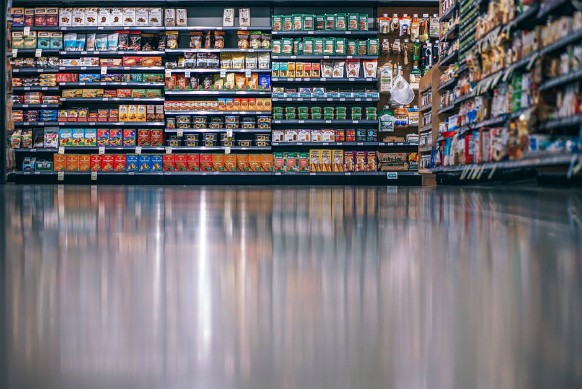
Planning to start your own convenience store business? You need a business plan first. Gone are the days when you can just start a business at any time you want as long as you have cash. The market has become too saturated that businesses come and go at a very fast rate. Investors are now very reluctant to pour their hard-earned investments in short-term deals as they are fearful they might not get enough earnings.
- Food Truck Business Plan Examples – PDF
- Bookkeeping Business Plan Examples – PDF
That is the reason why business plans are important when you start a business. It provides investors as well as other stakeholders necessary information about the company and its numerous activities. To help you create your own convenience store business plan, here are some examples (in PDF) you can use as reference. They are easy to download and they are all free as well.
Convenience Store Business Plan Example
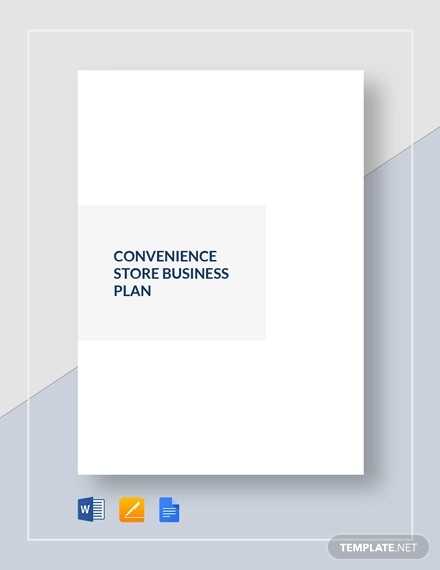
- Google Docs
Size: A4, US
Summary Convenience Store Business Plan Example
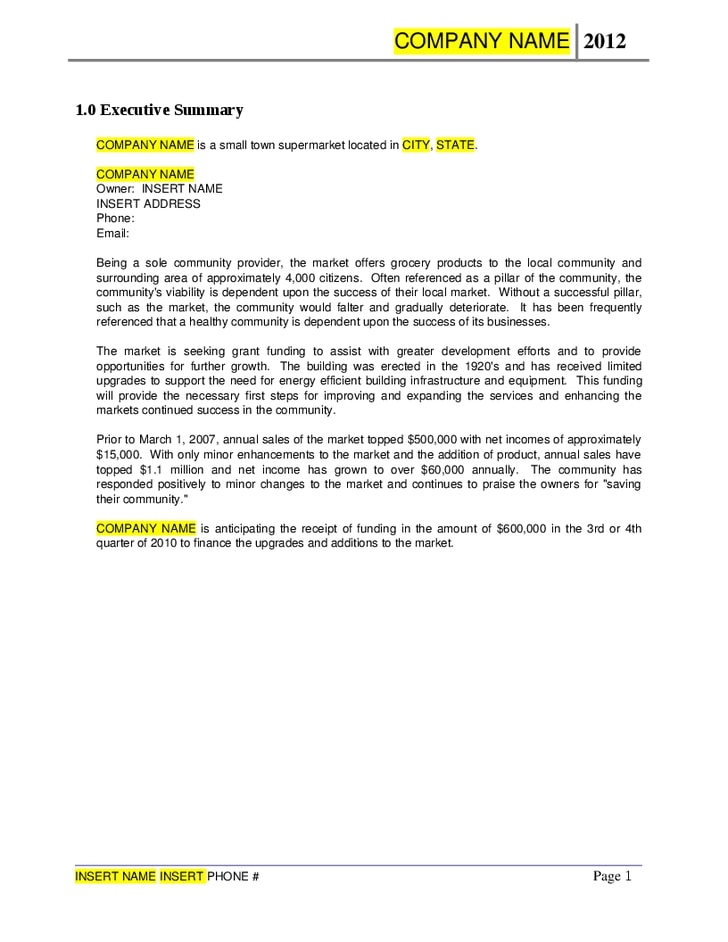
Size: 75 KB
Easy Convenience Store Business Plan Example
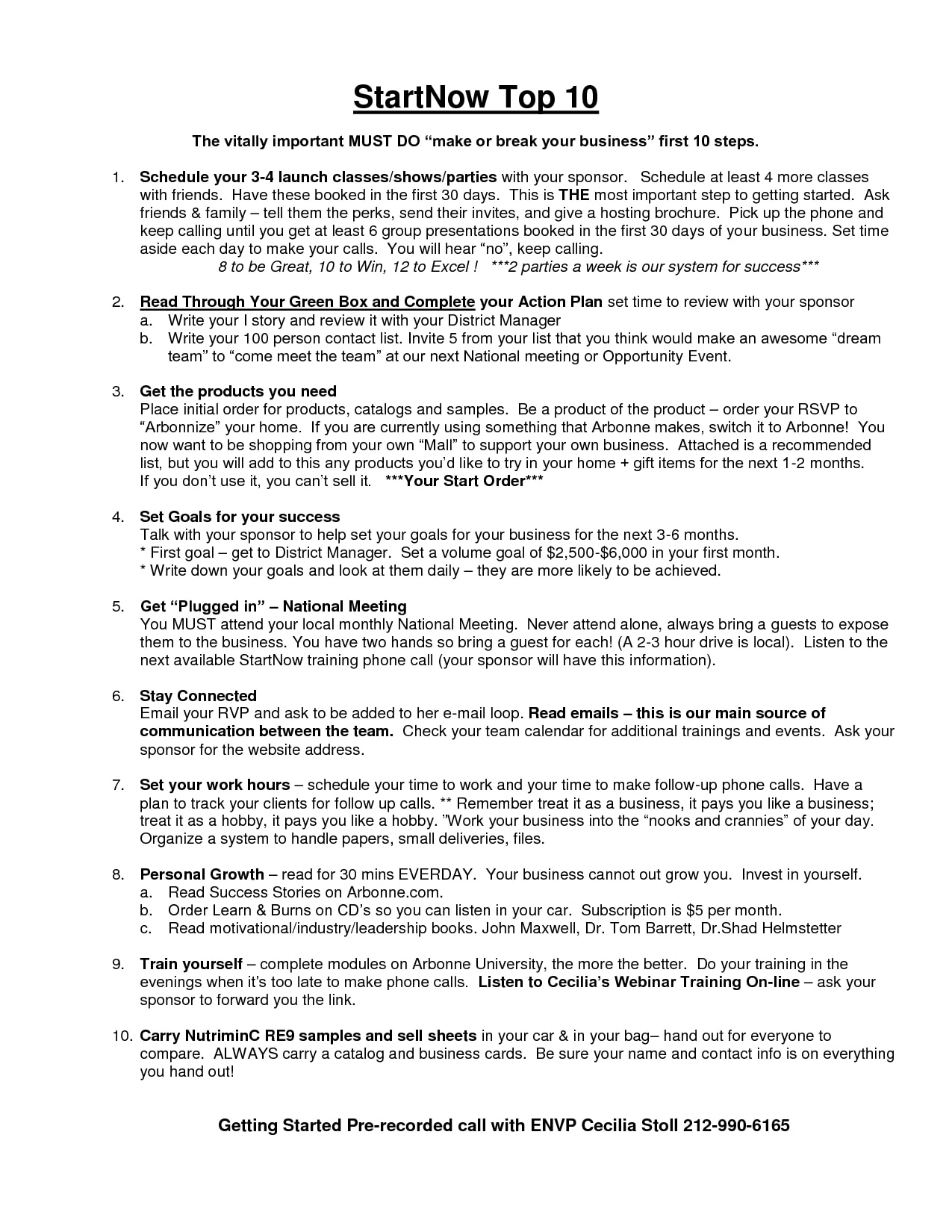
Size: 344 KB
Market Data Convenience Store Business Plan Example
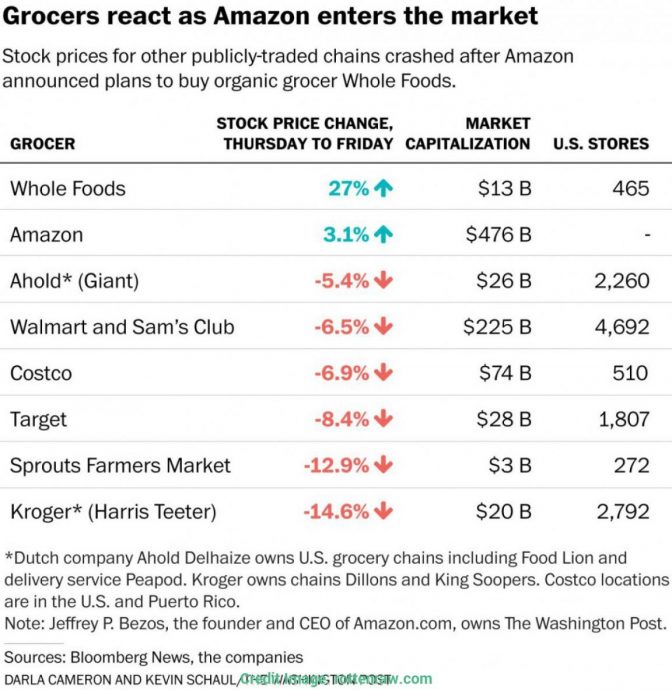
Size: 77 KB
Grocery Convenience Store Business Plan Example
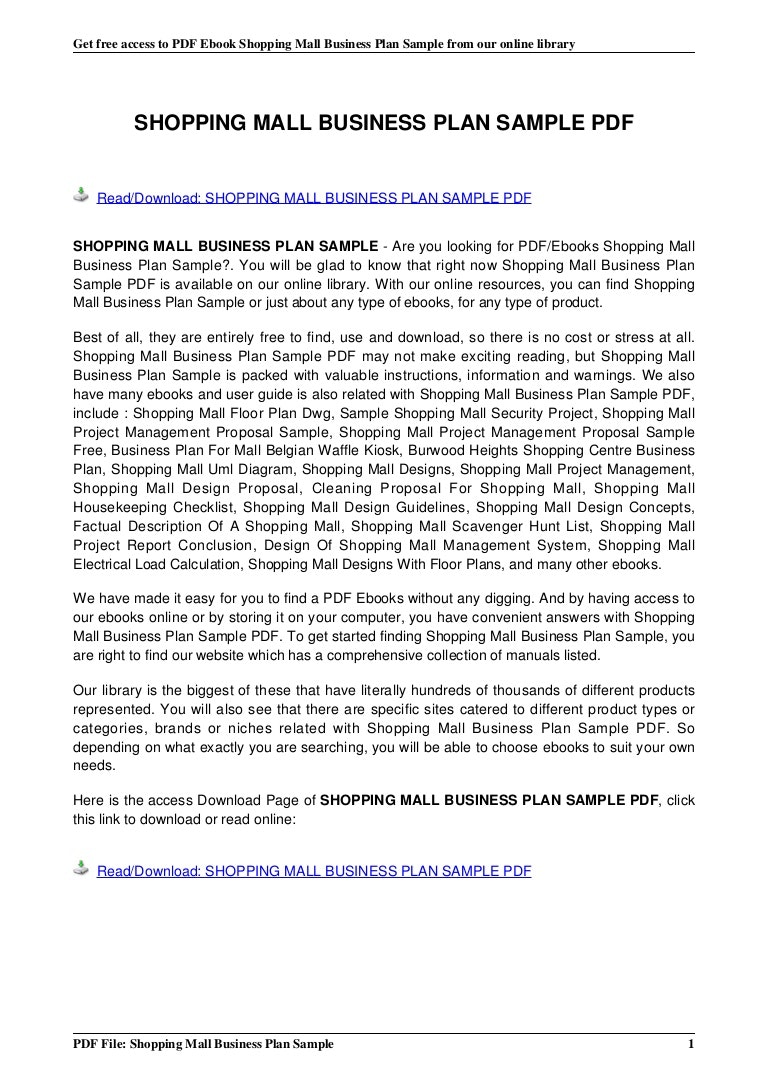
Size: 166 KB
How to Create a Business Plan
Listed below are some tips in creating a business plan. Take note that the tips provided below are not meant for a convenience store business plan only but for other types of business plan as well.
Even if you plan on starting a single proprietorship, you still need a couple of hands to help you out in establishing your business. That is why getting a team is important so that they don’t only help you create a business plan but also assist you in handling daily business operations.
You may or may not consider them as future business partners, so you need to clarify with them specific roles they will be handling. But if you already have a team in place, then there should be little to no problems in creating the business plan. Your team can either be composed of a combination of friends, relatives, business colleagues, or even individuals of whom you don’t have any previous relationships with but want to start a business with you.
Do research
Research has shown that the main reason why businesses fail is due to the lack of research. Take note that research is not only conducted at the beginning but a continuous process for the business to achieve long-term sustainability. Nevertheless, research is still important when the business is still being established, specifically in the creation of a business plan.
There are numerous research methods you can use especially when you will be using respondents as the main data for your business plan. Interviews (phone, email, personal), questionnaires, observations, and focus groups are among the data gathering methods you can use to gather data from respondents.
But if your research does not need respondents and is strictly focused on theories, then all you basically need are research materials. Research materials pertain to books, journals, publications, and online sources. Never assume anything in your business plan, as every information you provide should be backed up by facts and established data. Creating assumptions will only cause negative results for your eventual business and you will greatly suffer from heavy financial losses.
Focus on marketing and finance
A business plan has two main sections: marketing and finance. Marketing focuses on the creation of the product and how the product will be sold in the market while finance focuses on the earning capabilities of the business. That is the reason why marketing and finance have their own separate sections in the business plan.
Marketing is probably the most important aspect of any business as it involves the creation and distribution of the product. Marketing does not only involve advertising and promotion, but the latter is still important in making sure people are aware of that kind of product or service being sold in the market. Marketing is also involved with the creation of the product, not starting with the raw materials that are needed to be purchased, but starting with a plan on how that specific product will benefit a certain market segment.
In terms of finance, this relates to how the product can result to revenues and profits. There are numerous financial analysis methods that companies use to create revenue and profit forecasts. Using these methods may not be 100% accurate, but they provide a necessary blueprint for all forms of financial data the company will eventually be undergoing.
Most companies create a five-year financial analysis which covers all the costs the company will be incurring as well as the revenue and profit streams. The reason for this is to mainly provide data for investors as their decision to invest or not will depend on the stated financial analysis. Of course, they don’t only want to retrieve the initial amount they invested but also the interest that comes with it.
Consult with industry experts
Research is not the only method in creating an effective business plan. Consulting with industry experts is another way to make sure you incorporate the right data and information in the business plan. Industry experts are individuals who have achieved success in their respective industry or fields (i.e., entrepreneurship, technology, sales and marketing, finance, etc.).
Take note that industry experts may or may not provide you with confidential information, as they may be using the said information for their own purposes. But whatever information they provide, it will be highly useful when you will be establishing your own business.
Customizable Convenience Store Business Plan Example
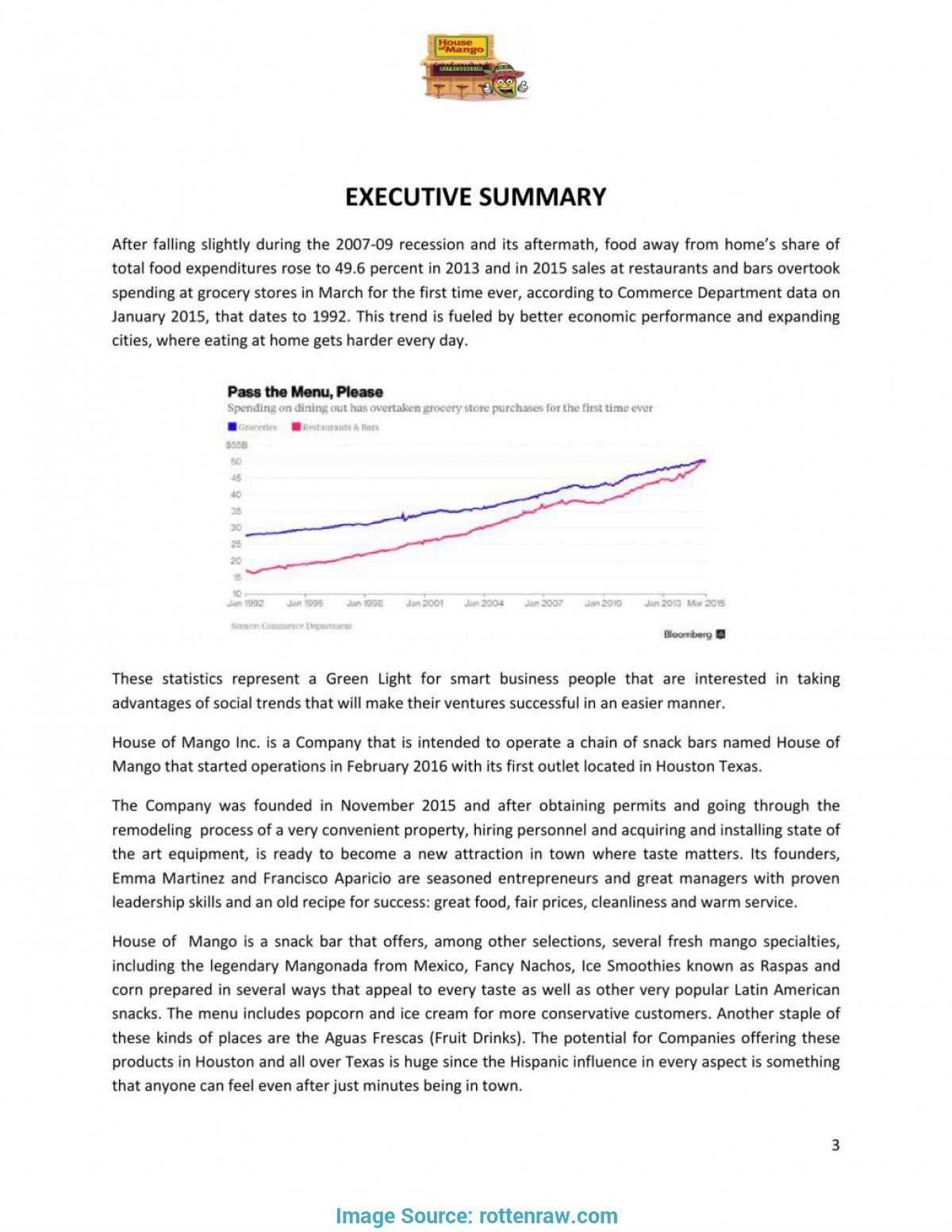
Size: 199 KB
Minimal Convenience Store Business Plan Example

Size: 104 KB
Coffee Convenience Store Business Plan Example
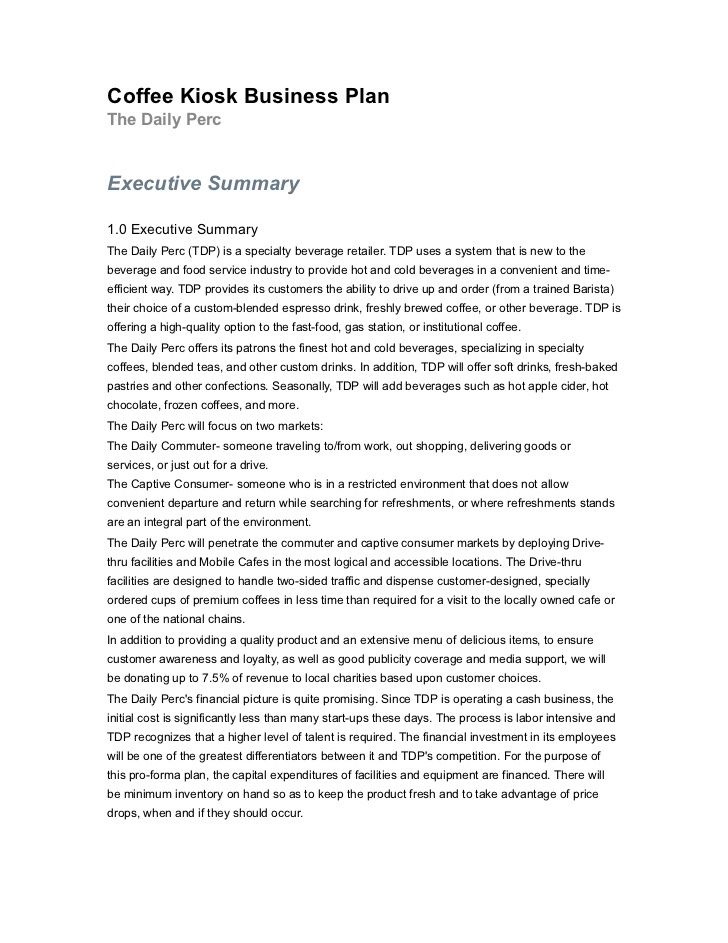
Size: 112 KB
What Products to Sell in a Convenience Store
A convenience store is basically a mini-supermarket. But you can’t pick up each and every item and sell them in your convenience store, in this case you might as well open your own supermarket. To help you narrow down the items you can sell in the convenience store, here are some products you should definitely sell.
Soft drinks, fruit juices, water
The liquids are grouped together by soft drinks, fruit juices, and water. These are the most important items to sell in a convenience store and this should be on the top of your priority list when buying supplies (although you may want to stock up more on water compared to soft drinks and fruit juices).
According to research, water and soft drinks are the most profitable items in a convenience store. These items can easily rake in large profits for your business, so make sure to get a deal with wholesalers so that you can get at least a week worth of supplies.
Healthy snacks
Convenience stores are not known to sell healthy snacks, but major convenience store chains such as 7-Eleven, Lawson, and Mini Stop started to change that trend. They have incorporated sandwiches and low-calorie meals and have proven to be a big hit among customers. You should implement this in your own convenience store as well.
The only problem when it comes to selling healthy snacks is the storage. These kinds of food are usually perishable, so you need a proper storage system so that these foods will still be editable even if it’s stored for more than a few hours. You can make your own snacks or find individual sellers and arrange a deal so that you can sell their food for a higher price. Take note when you will be making and selling your own snacks, you have to take account of the overhead costs when making these food items.
A convenience store is never complete without junk foods. Even if healthy foods are being sold, people will still go for the ever so popular chips, chocolates, and other processed food. You can also consider soft drinks as junk food.
Similar to soft drinks and water, junk foods are one of the most salable items in a convenience store. They are sold by the hundreds every day and people just keep on buying them. You can go for local junk foods or purchase imported ones.
Bath essentials
Convenience stores do not only center around food and drinks. Most convenience stores also sell bath (and laundry essentials). These products include soap, toothbrush, toothpaste, shampoo, conditioner, lotion, feminine wash, and laundry detergent, to name a few.
Bath essentials have also been a staple in convenience stores because they provide convenience to customers who are looking at other alternatives aside from the supermarket. Additionally, individuals most likely forgot to purchase these items at the supermarket so they turn to convenience stores instead. So, it is the responsibility of the convenience store to provide these items to customers.
School supplies
Aside from bath essentials, school supplies are also the non-food products that are sold in a convenience store. School supplies are targeted mostly at students and individuals who are working for an academic institution. Similar to bath essentials, school supplies are sold to individuals who are looking at another venue to purchase these items. The reasons might involve the person forgetting to purchase the product in a store or the person just wanting to purchase the product in a location that is more convenient to him or her.
Until only recently, convenience stores have also started selling medicine (prescription and non-prescription). Business owners have created an idea to merge a pharmacy and a convenience store into one business. And the result is a pharmacy-convenience store industry which has promisingly become very profitable.
Setting up a pharmacy together with a convenience store is much more difficult since there are numerous licenses and requirements that need to be accomplished first before the business can open. Additionally, employees also need to be registered pharmacists as this is a requirement by most countries in regards to people working in a pharmacy.
Medicines are not a requirement to be sold in a convenience store. Even non-prescription medicines are still very salable and they are not as expensive as the prescription ones.
Most Popular Convenience Stores Around the World
US-based 7-Eleven is the largest convenience store in the world. The store currently has over 8,600 stores in North America and around 43,500 stores throughout Latin America, Europe, Asia, and Australia.
FamilyMart is one of the most popular convenience stores in Asia. It was founded in Japan and operations quickly expanded to China, Taiwan, Vietnam, the Philippines, and recently in the US.
This Indonesia-based convenience store has over 3,000 stores across Jakarta, Bali, Sumatra, and Sulawesi.
Tesco Express
Tesco Express is the biggest convenience store in the United Kingdom. Tesco currently operates 6,500 stores around the world.
Ministop is another Japan-based convenience store which has proven to be very successful outside its home soil. It currently has stores in the Philippines, Korea, Vietnam, and Indonesia.
CBA is the Eastern Europe equivalent of 7-Eleven. Founded 1992 in Hungary, CBA currently boasts 5,000 stores across Romania, Serbia, Bulgaria, Slovakia, Croatia, and Poland.
Matrix Convenience Store Business Plan Example
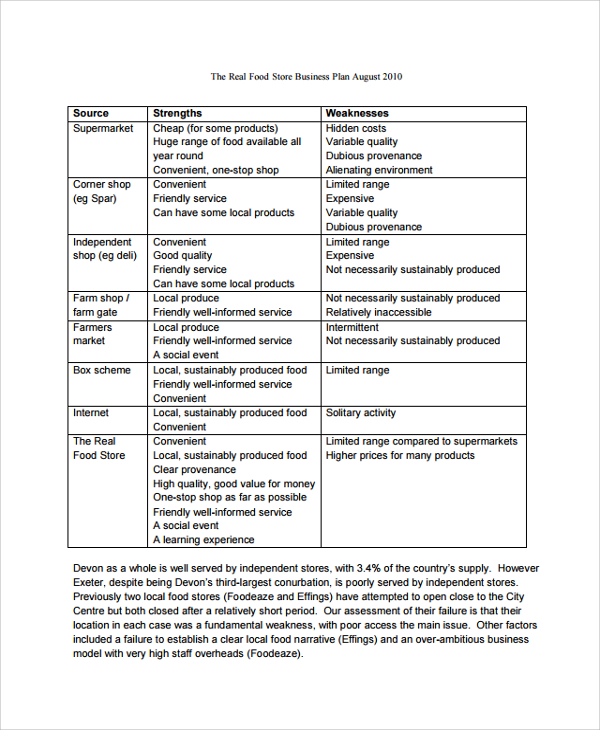
Convenience Store Expenses Business Plan Example
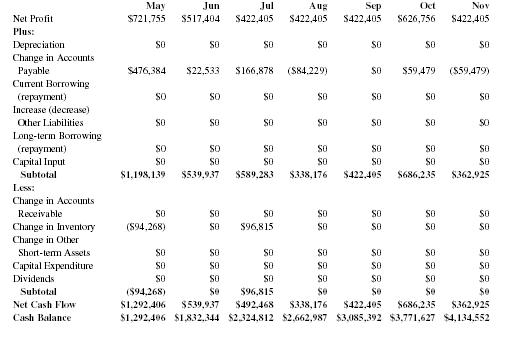
Size: 33 KB
We hope you found this article to be informative as well helpful when you will be creating your own convenience store business plan.
Text prompt
- Instructive
- Professional
Create a study plan for final exams in high school
Develop a project timeline for a middle school science fair.
Convenience Store Business Plan PDF Sample Free Download
How to Start a Convenience Store Business - Convenience Store Business Plan PDF
Are you considering starting a Convenience Store Business and you’re in need of a convenience store business plan PDF? if yes, you'll find this free book to be extremely helpful.
This is a practical guide that will walk you step by step through all the essentials of starting your business. The book is packed with guides, worksheets and checklists. These strategies are absolutely crucial to your business' success yet are simple and easy to apply.
Don’t Start a New Convenience Store Business Unless You Watch This Video First!
Checklist for Starting a Business: Essential Ingredients for Success
If you are thinking about going into business, it is imperative that you watch this video first! it will take you by the hand and walk you through each and every phase of starting a business. It features all the essential aspects you must consider BEFORE you start a business. This will allow you to predict problems before they happen and keep you from losing your shirt on dog business ideas. Ignore it at your own peril!
Here’s a Valuable Free Gift for You This is a high quality, full blown business plan template complete with detailed instructions and all related spreadsheets. You can download it to your PC and easily prepare a professional business plan for your business. Click Here! To get your free business plan template
The Single Most Important Ingredient for Business Success
The first and most important thing you need to acquire in order to succeed in a small business is... knowledge.
Sounds exaggerated? Listen to this...
According to research conducted by Dun & Bradstreet, 90% of all small business failures can be traced to poor management resulting from lack of knowledge.
This is backed up by my own personal observations. In my 31 years as a business coach and consultant to small businesses, I've seen practically dozens of small business owners go under and lose their businesses -- not because they weren't talented or smart enough -- but because they were trying to re-invent the wheel rather than rely on proven, tested methods that work.
Conclusion: if you are really serious about succeeding in a business... If you want to avoid the common traps and mistakes... it is absolutely imperative that you acquire the right knowledge.
"Why Invent Mediocrity, When You Can Copy Genius?"
That's an excellent quote I picked up from a fellow business owner a few years back. What this means is that you should see what is working and try to duplicate it. Why go through all the trouble of inventing something new, that you don't even know will ever work, when you can easily learn from and duplicate something that has been a proven success?
[ Note: One of the BIGGEST mistakes almost all new businesses make is that they WASTE tons of valuable time, energy and money on trying to create something "new", that has never been tested or proven... only to find out later that it was a total loss. Don't make the same mistake! ]
Hi! My name is Meir. I'm the founder and president of BizMove.com, a successful Internet based information business. I'm also the author of numerous books, mostly in the area of small business management.
I've been involved in small business for the past 31 years of my life, as a business coach, manager of a Convenience Store firm, a seminar leader and as the owner of five successful businesses.
During my career as a business coach and consultant I've helped dozens of business owners start their businesses, market, expand, get out of troubles, sell their businesses and do practically every other small business activity you can think of. You see, I have been there .... done it ... and bought the Small Business t-shirt! -- This free book contains techniques and strategies I've learned during my 31 year small business career.
Here's what you'll discover in the 'How to Start a Convenience Store Business' book:
Success Tip: Setting Goals
Good management is the key to success and good management starts with setting goals. Set goals for yourself for the accomplishment of the many tasks necessary in starting and managing your business successfully. Be specific. Write down the goals in measurable terms of performance. Break major goals down into sub-goals, showing what you expect to achieve in the next two to three months, the next six months, the next year, and the next five years. Beside each goal and sub-goal place a specific date showing when it is to be achieved.
Plan the action you must take to attain the goals. While the effort required to reach each sub-goal should be great enough to challenge you, it should not be so great or unreasonable as to discourage you. Do not plan to reach too many goals all at one time.
Establish priorities. Plan in advance how to measure results so you can know exactly how well you are doing. This is what is meant by "measurable" goals. If you can’t keep score as you go along you are likely to lose motivation. Re-work your plan of action to allow for obstacles which may stand in your way. Try to foresee obstacles and plan ways to avert or minimize them.
Click here! to download your Convenience Store Business plan PDF book for free
Here're other free books in the "how to start a business" series that may interest you:
Here's a Sample 'Executive Summary' for a Convenience Store Business plan :
Introduction: As a direct result of the ongoing South Dakota oil boom, the state's economy is booming as well, with the lowest state jobless rate in the country of 3.6% in July, and recent jobs gains that completely offset all of the jobs lost during the recession, bringing South Dakota's employment to a record high in July of 373,500. With this type of job growth there is a record amount of people moving into the state of South Dakota. The increase in population the opportunity to create a Dollar Store is immensely great. As new people move in and new neighborhoods are being, created people will need the grocery stores to feed their families. Even with low unemployment, people are still looking to save much of their income and a dollar store will offer those potential customers the savings they are looking for. The Company: [COMPANY NAME] is a start-up retail that will be franchisee of the Dollar Store Inc. The Dollar Store provides interesting merchandise options at bargain prices. The Dollarstore, Inc. is one of the few Dollar Store franchisers that owns and operates a corporate store. Being a volume distributor Dollar Store passes on the best price to its franchisees. Dollar Store, Inc. is committed to providing the assistance you need to tap into your share of this growing market. Our name alone wins you a following of loyal customers who count on the Dollar Store to provide the products and service they need for their daily use. The Dollar Store is the only corporation, which provides everything you need to run a Dollar store.
Our Services: Dollar Store sells a variety of quality discount merchandise. The types of merchandise we will carry will include items such as dishware, household goods, toys, cosmetics, candy, greeting cards, and a list of items too exhaustive to list here. A dedicated staff is committed to providing excellent customer service. The merchandise is purchased from a variety of well-known manufacturers such as Procter & Gamble, General Mills, American Greetings as well as a number of other generic branded companies. Shipments arrive on a daily basis. We will continue to find new product lines that can be added to our inventory. We are able to sell products at very low prices, because we will purchase items from discontinued lines, seconds, over runs, etc., that cannot be sold to a manufacturer's usual retail customers.
The Market: The Dollar and Variety Stores industry has capitalized on the recession, with more consumers turning to its stores for deep discounts. Over the next five years, dollar and variety stores are expected to continue performing well by targeting low-income households and thrifty customers.
Financial Considerations: [COMPANY NAME] is seeking grant funds in the amount of $363,000. This business plan and all the financial data is based on [NAME] and [NAME] receiving these grant fund The Dollarstore inc. Franchising offers a host of benefits no other business opportunity can match:
- Immediate product and brand recognition
- Established distribution channels
- Store Operation System (POS)
The major focus for grant funding is as follows:
- Marketing/advertising fees for designing our grand opening.
- Purchase Inventory
- Hire additional personal
- Legal fees for corporate organization filings
- Secure building
- 100% woman owned business
1.1 Objectives
The primary objectives of [COMPANY NAME] are: 1. To provide a wide range of merchandise at reasonable prices. 2. To achieve a healthy profit margin within the first year. 3. To achieve a modest net profit by year two. 4. To bean active and vocal member of the community.
1.2 Mission
[COMPANY NAME] provides a variety of interesting merchandise options at bargain prices. Dedicated to customer service [COMPANY NAME] will give its patrons the kind of service that is respectful and prompt. Employees of [COMPANY NAME] will also be treated in a professional manner with a rewarding work environment and fair compensation. [COMPANY NAME] wants each customer to feel as though he/she has gotten Fifth Avenue treatment at a bargain price.
1.3 Keys to Success
- To succeed in this business we must:
- Sell a broad range of products.
- Provide for the satisfaction of 100% of our customers.
- Be an active member of the community.
- Encourage customer input.
[COMPANY NAME] sells products and provides excellent customer service for the public. They have located a space that they will lease for a retail store, which will be use to market and merchandise the stores products. [COMPANY NAME] is formed as a sole prop and formed in November of 2010 by [NAME] and [NAME].
2.1 Company Ownership
[NAME] and [NAME] are both 50% partners in [COMPANY NAME].
2.2 Start-up Summary
[COMPANY NAME] will be established in the State of South Dakota in the fourth quarter of 2010. The Company estimates starting operations and receiving grant funding in the amount of $363,000 first quarter 2011.
Start-up expenses are from incorporation to start of operations in the amount of $202,500 including legal fees, initial advertising campaign and operating costs for the first three-month period. Additionally, the Company will need a start-up inventory of $125,000 and working capital of $35,000
Table: Start-up
[COMPANY NAME] sells a variety of quality discount merchandise. The types of merchandise we will carry will include items such as dishware, household goods, toys, cosmetics, candy, greeting cards, and a list of items too exhaustive to list here. A dedicated staff is committed to providing excellent customer service. The merchandise is purchased from a variety of well-known manufacturers such as Procter & Gamble, General Mills, American Greetings as well as a number of other generic branded companies. Shipments arrive on a daily basis. They will continue to find new product lines that can be added to our inventory. [BUSINESS NAME] is able to sell products at very low prices, because they will purchase items from discontinued lines, seconds, over runs, etc., that cannot be sold to a manufacturer's usual retail customers.
Proper Business E-mail Etiquette Tips
“This wild, wonderful web! All of the opportunities at our fingertips! Customers galore!” “They'll be beating down the server and I'll have so many orders I won't know what to do with myself!” As a business owner, have you ever had those thoughts? Think again. :) While it may be easy street for a select few, for most, it's not. So how can you make sure your business is successful? Try a little E-Mail Courtesy. Seriously! Many of the businesses who have established themselves on the Internet haven't the faintest idea of how to address one of the most important issues online: Customer Service. “Why should customer service matter? My product's right there, along with my order form.” It does matter. Shoppers on the net are still wary. They may e-mail you first to see if they receive a response and what the response is like. They may ask questions to see if you express enough knowledge about your own products/services and to gather your enthusiasm about what you're selling. Businesses come and go on the web, and only those who show true interest and enthusiasm about what they're selling will survive. If the shopper is another business, they might request to exchange links -- and see how they are treated in their request. Or they may request a free sample. And all of this will most likely be done through e-mail. So how can you and your online business show courtesy through e-mail? Here are 10 tips to get you started:
1. Answer your e-mail and answer it promptly. The Internet is FAST. It gives people information in a much shorter amount of time than having to go through a more traditional route of finding what they want. Customers expect FAST replies. An appropriate response time in my opinion should be 48 hours. No longer. If you wait a month to answer a request from a customer - forget it. They are GONE.
2. In addition to regular inquiries, answer your customer *complaints* immediately. Within 24 hours. Nothing irritates a consumer more than to order from you, receive a product with a problem, then have to wait over a week for your reply as to how they should handle the situation. If you wait longer than one day to respond to a customer with a complaint, you might as well kiss future sales to that person goodbye. Even if you don't know what the customer and/or you can do to rectify the problem, at least make contact with the customer. Assure them you are working on it, and then DO IT. There aren't too many *easy* sales on the net - you have to work for them, and this is one way you can accomplish your objective.
3. Address letters to your customer or potential customer in a business-like manner. Dear “Mr./Mrs. So & So” will suffice. When addressing other businesses on the net and you don't know the name of a contact person, try something like “ATTN: Director of Marketing”.
4. If you offer something FREE for the client, whether it be information or a sample product, be sure to send it. If it is to be sent via e-mail, send it the SAME DAY. If you are not able to send information daily as it is requested, use an autoresponder. Don't wait two weeks until the potential customer forgets they've ever heard of you. If you are sending a free sample, send it the SAME WEEK. Customers would expect a snail-mail package or product to arrive slower than e-mail, but no longer than a week.
5. When sending an unsolicited marketing pitch to a potential customer via e-mail, keep it short. I learned this the hard way. :)) Now, my pitch goes something like this -- “If you'd like to consider a unique, personal, and colorful advertisement for your company -- and at a reasonable price compared to traditional online advertisers -- please e-mail me or visit my web site for more information.” That way if the prospect is interested, the pitch isn't forced on them before they're ready. They can look at their leisure. Which is what you want them to do, so they'll have the proper time to consider your offer. And of course, it doesn't hurt to comment positively on their web site and give your impressions. :) It also will help if you buy one of the company's products while you are visiting.
6. If someone mails you a pitch and you're not interested in the product or service, don't blast them will a slew of obscenities. If you're not interested, don't answer. Or maybe consider replying in this fashion: “Dear Mr. So & So, Thank you for making me aware of your fine service. I am not currently in a position to employ such services, but will definitely keep you in mind if and when I decide to do so. And since you visited my site, I'd like to offer you a free copy of___________ (or free sample of our most popular herb) (or 10% discount on our gold watches, good for this week only).” What does this do? It turns the selling party into a potential buying party. For one, they will appreciate the fact you took time for a personal reply. And they might just buy your discounted product!
7. If someone gives you an award, recognition, or other form of positive communication, THANK THEM. And do so promptly. That person giving that award or special mention of your company name didn't *have* to take the time to do it. You can assure great future relations if you immediately zip them off an e-mail expressing your thanks. After all, how long does it take? Three seconds to type “thank you” and hit “send”.
8. Follow through. If you are corresponding with a customer via e-mail on a situation, be sure to keep the contact going until the situation is resolved. The customer will appreciate your attentiveness to both them and whatever the situation might be.
9. Never, ever, ever address the customer by the *wrong name*. Always look at their letter, observe the spelling of their name, and get it right. A person's name is an individual trait, specific to them. When addressed by the wrong name, or misspelled name, people tend to feel they don't mean much to you, or you are showing lack of attention to detail -- not a good trait for an online vendor to display.
10. Always remember...the way in which you deal with people online - either within e-mail, on mailing lists or newsgroups -- will reflect back to you. If you make negative comments about another online vendor, the customer could lose respect for you as a business person. After all, who's to say the next negative remark won't be made about *that customer*?
You've heard “The customer is always right” and “The customer always comes first”. Both of those statements should be adhered to online, just as they would be if you were face to face with them in your off-line place of business. Because for every business online, new ones are popping up daily to provide competition. And who will be the winners? Those who are courteous and respectful of everyone online.
Copyright © by Bizmove Free Business Guides. All rights reserved.

Convenience Store Business Plan Template [Updated 2024]
Convenience Store Business Plan
If you want to start a convenience store or expand your current business, you need a business plan.
The following sample business plan and template gives you the key elements to include in a winning business plan. It can be used to create a convenience store start up business plan or a plan to grow your existing business.
You can download our Business Plan Template (including a full, customizable financial model) to your computer here.
Below are links to each of the key sections of a successful convenience store business plan. Once you create your plan, download it to PDF to show banks and investors.
I. Executive Summary II. Company Overview III. Industry Analysis IV. Customer Analysis V. Competitive Analysis VI. Marketing Plan VII. Operations Plan VIII. Management Team IX. Financial Plan
Comments are closed.
Convenience Store Business Plan Home I. Executive Summary II. Company Overview III. Industry Analysis IV. Customer Analysis V. Competitive Analysis VI. Marketing Plan VII. Operations Plan VIII. Management Team IX. Financial Plan


Free Download
Convenience Store Gas Station Business Plan Template
Download this free convenience store gas station business plan template, with pre-filled examples, to create your own plan..
Or plan with professional support in LivePlan. Save 50% today
Available formats:
What you get with this template
A complete business plan.
Text and financials are already filled out and ready for you to update.
- SBA-lender approved format
Your plan is formatted the way lenders and investors expect.
Edit to your needs
Download as a Word document and edit your business plan right away.
- Detailed instructions
Features clear and simple instructions from expert business plan writers.
All 100% free. We're here to help you succeed in business, no strings attached.
Get the most out of your business plan example
Follow these tips to quickly develop a working business plan from this sample.
1. Don't worry about finding an exact match
We have over 550 sample business plan templates . So, make sure the plan is a close match, but don't get hung up on the details.
Your business is unique and will differ from any example or template you come across. So, use this example as a starting point and customize it to your needs.
2. Remember it's just an example
Our sample business plans are examples of what one business owner did. That doesn't make them perfect or require you to cram your business idea to fit the plan structure.
Use the information, financials, and formatting for inspiration. It will speed up and guide the plan writing process.
3. Know why you're writing a business plan
To create a plan that fits your needs , you need to know what you intend to do with it.
Are you planning to use your plan to apply for a loan or pitch to investors? Then it's worth following the format from your chosen sample plan to ensure you cover all necessary information.
But, if you don't plan to share your plan with anyone outside of your business—you likely don't need everything.
More business planning resources

How to Write a Business Plan

Simple Business Plan Outline

Industry Business Planning Guides

Business Plan Template

How to Write a Business Plan for Investors

How to Create a Business Plan Presentation

10 Qualities of a Good Business Plan

How to Start a Business With No Money
Download your template now
Need to validate your idea, secure funding, or grow your business this template is for you..
- Fill-in-the-blank simplicity
- Expert tips & tricks
We care about your privacy. See our privacy policy .
Not ready to download right now? We'll email you the link so you can download it whenever you're ready.
Download as Docx
Download as PDF

Finish your business plan with confidence
Step-by-step guidance and world-class support from the #1 business planning software

From template to plan in 30 minutes
- Step-by-step guidance
- Crystal clear financials
- Expert advice at your fingertips
- Funding & lender ready formats
- PLUS all the tools to manage & grow

The quickest way to turn a business idea into a business plan
Fill-in-the-blanks and automatic financials make it easy.
No thanks, I prefer writing 40-page documents.

Discover the world’s #1 plan building software

IMAGES
VIDEO
COMMENTS
Download a free convenience store business plan template that includes pre-written examples for every section to help you write your own plan. Business Planning. ... Download as PDF Finish your business plan with confidence. Step-by-step guidance and world-class support from the #1 business planning software. Get 50% off LivePlan Now ...
A business plan helps you stand apart from your competitors and prepares you for challenges and opportunities alike. Industry Overview. The convenience store industry generated a whopping amount of 532.9 billion dollars in 2020 and continues to grow at a rapid pace moving forward, too.. As convenience stores provide access to a variety of things including packaged food, fresh groceries, and on ...
6. Financial Plan. The financial plan is perhaps, with the executive summary, the most important section of any business plan for a convenience store. Indeed, a solid financial plan tells lenders that your business is viable and can repay the loan you need from them.
Convenience Store Business Plan Template. If you want to start a convenience store business or expand your current one, you need a business plan. Over the past 20+ years, we have helped over 7,000 entrepreneurs and business owners create business plans to start and grow their convenience stores.
Speedy Pete's Convenience Store will have the following milestones complete in the next six months. 1/1/202X - Finalize purchase of retail land. 2/15/202X - Begin construction on the convenience store. 3/1/202X - Finalize contracts for gas and grocery supplier. 4/15/202X - Purchase all store inventory and supplies.
For seamless customization, we provide a 'Convenience Store Business Plan PDF' for download. This document is vital for entrepreneurs committed to developing a compelling and effective strategy for launching or growing their convenience store. The 'AI Business Plan Generator' serves as a comprehensive resource, offering profound insights into ...
A free example of business plan for a convenience store. Here, we will provide a concise and illustrative example of a business plan for a specific project. This example aims to provide an overview of the essential components of a business plan. It is important to note that this version is only a summary.
By using our Convenience Store Business Plan Template, you can experience several benefits: Time and Effort Saving: Leverage our ready-made template that simplifies the planning process. Focus on fine-tuning your convenience store concept and business tactics rather than building a plan from scratch. Clarity and Direction: Our template provides ...
Food Truck Business Plan Examples - PDF. Bookkeeping Business Plan Examples - PDF. That is the reason why business plans are important when you start a business. It provides investors as well as other stakeholders necessary information about the company and its numerous activities. To help you create your own convenience store business plan ...
This plan covers all the information and data required to attract funding for a convenience store. The sections mentioned below aren't limited, and you can add more per your need. 1. Executive Summary. [Sender.Store] is a convenience store located in [Sender.City] [Sender.State]. It aims to serve various schools, residential areas, and ...
Here is a corner store business plan template that includes the important elements you need to include in your business plan. To ensure your convenience store business success in this highly competitive market, you need a properly structured business plan. With over 12 years of experience, we have helped over 5,000 entrepreneurs create business ...
The convenience store industry is one of the few industries which have seen a constant increase in revenue along with the increase in business locations with time. The total sales from the US convenience store industry increased by approximately $80 billion within the course of one year from 2015 to 2016. The number of convenience stores has ...
Executive Summary: Provide an overview of your business concept, market analysis, and financial projections. Business Description: Describe your convenience store, its location, target market, and ...
A complete convenience store business plan PDF template. This fill-in-the-blanks template includes every section of your business plan, including Executive Summary, Objectives, SWOT Analysis, Marketing Analysis and Strategy, Operations Plan, Financial Projections and more (a similar template is sold elsewhere for $69.95).
Convenience Store Business Plan. If you want to start a convenience store or expand your current business, you need a business plan. The following sample business plan and template gives you the key elements to include in a winning business plan. It can be used to create a convenience store start up business plan or a plan to grow your existing ...
The annual sales were approximately $500K with a net income of approximately $15K. After installing new shelving, increasing product selection, and including bi-weekly sales, SafeMart Grocery LLC has more than doubled annual sales and has shown a net income of approximately $60K for the past two years. Past Performance.
You may also see free business plans . 43+ Business Plan Templates in Microsoft Word. 20+ Printable Business Plan Templates. So what you're going to have to do is to come up with a sample business plan that will tell you everything that you need to do in order to push your convenience store towards success.
Figure out funding. The average cost to open a convenience storeranges between $50,000 to $100,000. That's far less than the cost to open a restaurant, but it's still a healthy chunk of change. You may not be able to do it out of pocket, in which case you'll need funding. Loans are a common option.
Convenience Store Business Plan - Free download as Word Doc (.doc), PDF File (.pdf), Text File (.txt) or view presentation slides online. convenience store business plan
Revised October 2020 A Sample Business Plan. This document was developed as an instructional aide for use with "The Business Plan" workshop. Quick Mart is a hypothetical business operation presented only as a case-study. ASU-SBDC: Funded in part through the State of Texas and a Cooperative Agreement with the U.S. Small Business Administration.
Download this free convenience store gas station business plan template, with pre-filled examples, to create your own plan. Download Now ... Download as PDF Finish your business plan with confidence. Step-by-step guidance and world-class support from the #1 business planning software. Get 50% off LivePlan Now ...
Candover Valley Community Store Business Plan CONFIDENTIAL Page 5 of 34 With this new version of the business plan original information has been moved to appendices if superseded with more recent updates in order to keep a record of the activities and intentions of the CVCS committee.